At his Malibu beach house, the influential Californian architect introduces Julia Sherman to a signature dish set to feature in her new cookbook



Subscribe to Port Magazine annually and receive each issue to your door.
Get PORT in printSubscribe to Port Magazine annually and receive each issue to your door.
Get PORT in printAt his Malibu beach house, the influential Californian architect introduces Julia Sherman to a signature dish set to feature in her new cookbook



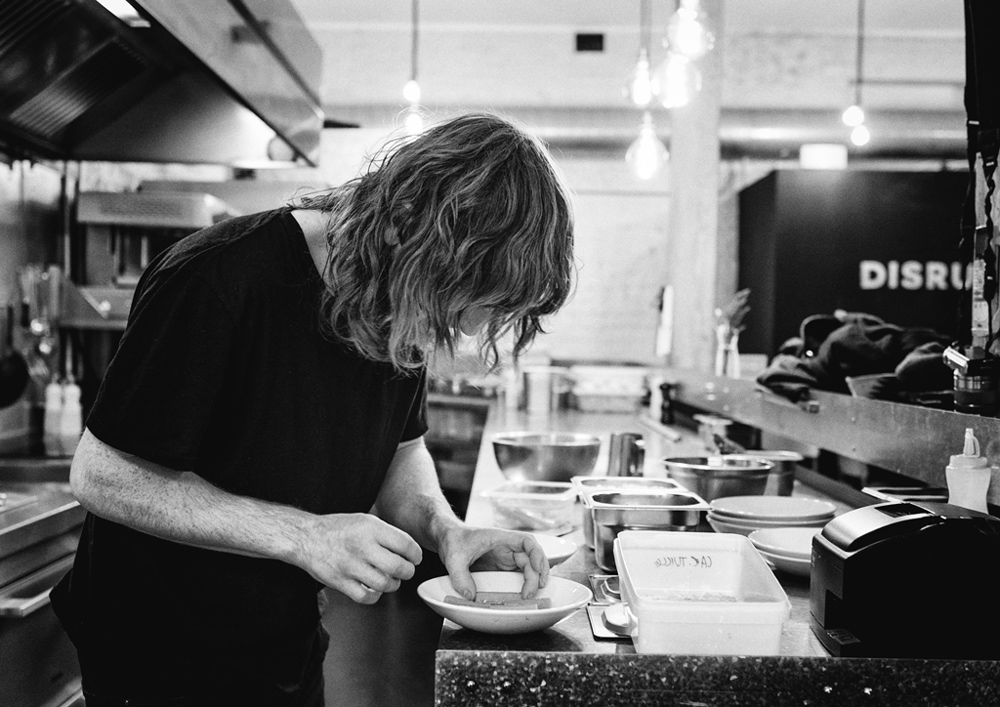
McMaster’s menus are driven by season and the environment. ‘If there is a large crop of cucumbers, we put cucumbers on the menu. If the forager finds mushrooms, then mushrooms it is. We don’t dictate nature, nature dictates us.’ Recently, he collaborated with Patron Tequila for a Secret Dining Society event, and alongside Mr Lyan founder Iain Griffiths, presented a zero-waste cocktail pairing menu. ‘We even printed the menus on 100% recycled agave to save the agave fibres from tequila production going to waste,’ he says.
As Chinese New Year celebrations begin, Michelin-starred chef Tong Chee Hwee talks to PORT about the importance of competition, using tradition to create contemporary Chinese dishes and learning from a master
Set up by Alan Yau OBE, the Hong Kong-born restaurateur behind the successful high-street chain Wagamama and the Yauatcha dim sum eateries, the Hakkasan brand has become synonymous with high-end Cantonese fine dining around the world, having first taken root in London’s West End 16 years ago.
Although the commercial accomplishments may be attributed to Yau (who sold Hakkasan and Yauatcha to Emirati investors in 2008), Hakkasan’s reputation for crafting modern interpretations of traditional dishes from southeast China is surely owed to the ongoing efforts of executive head chef Tong Chee Hwee.
After working for 18 years under “master of Cantonese cuisine” Cheng Hon Chau in Happy Valley Singapore and Malaysia, Chef Tong came to London to set up Hakkasan in 2001, and quickly earned a Michelin star within just two years. Building on this, Hakkasan has since ballooned into something of an empire, with outposts in New York, Mumbai, Las Vegas, Doha and beyond.
Today, Chef Tong bases himself in HKK, the group’s City of London restaurant whose mission is to “celebrate the true diversity of Chinese cuisine”. It’s in HKK that Chef Tong and his team experiment with new creations which, if successful, are rolled out to the other restaurants in the Hakkasan network.
Here, we sit down with Chef Tong to discuss how he created the Emperor’s Feast menu to celebrate Chinese New Year, competing with top international chefs and why he’s passionate about using Western ingredients in his cooking.
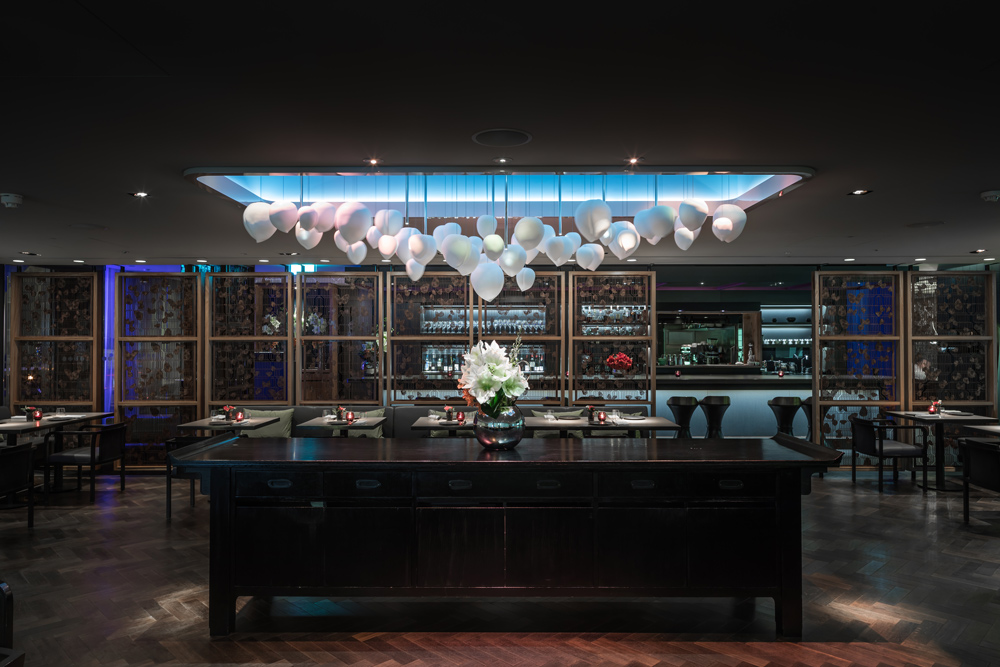
What memories do you have of celebrating Chinese New Year from your childhood? What food would have been around the family table?
I remember the delicious meals my Hakka grandmother used to cook during Chinese New Year celebrations. She had such a talent, and she passed that talent on to my mother.
Prosperity toss salad with raw fish, Pen Cai or Big Basin Feast, roast duck or chicken and dumplings are the most popular and traditional to commonly serve during Chinese New Year. My grandmother always cooked them for family. Now I always cook for my family, I am most happy when cooking for them and watching them enjoy the food when everyone is gathered around the table.
What sets HKK apart from the other restaurants in Hakkasan Group?
Hakkasan focuses on modern Cantonese cuisine, whereas HKK is modern Chinese cuisine; the reason behind HKK is to further improve the standard of Hakkasan. I found that Cantonese and Chinese cuisine in London lacked the individual fine dining standard, and HKK is a restaurant that combines quality Chinese cuisine and French fine-dining service.
What are the biggest challenges of creating Chinese fine dining for a diverse London palette?
I think the biggest challenge for me during these 15 years is that I’ve seen lots of international cooking, with international chefs coming from all over the world with new dishes and new cuisines. We as chefs and restaurants are now forced to offer something new and interesting to meet consumer’s needs. They expect it. But, for me, it’s a great improvement and I look forward to this continuing in the future.
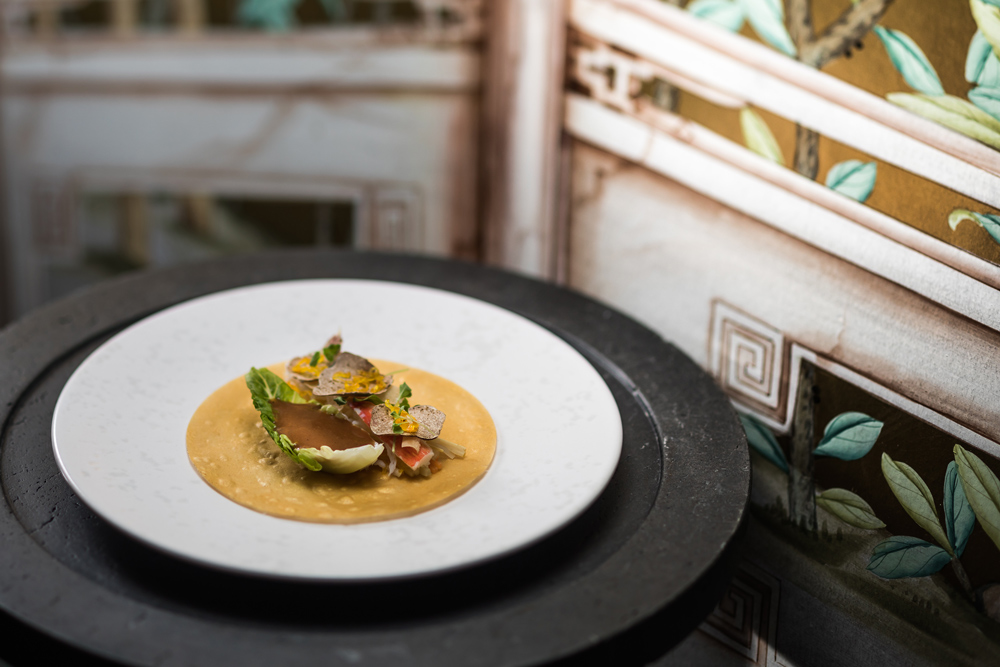
At what point in your career did you feel that you had mastered your craft?
I began working under my master Chef Cheng Hon Chau. He was known as a master of Cantonese cuisine, and it was under his mentorship that I honed my own skills and techniques. After four years, I became a master chef to run the restaurant [Happy Valley]. It is hard to find the point in my career because I am always learning and improving.
What are the key lessons you’ve learned in your career, which you often pass on to your junior chefs?
First, the UK is a highly global society; you can find food from all over the world very easily. Therefore, positive competition can definitely encourage people and help people to improve their ability to create a better restaurant with a unique style. Second, change your [perspective] and consider yourself as a guest – would you be experiencing well-prepared hospitality and concepts? No matter where they are, in the UK or anywhere else in the world, if customers receive the best service and best quality food what is not to like?
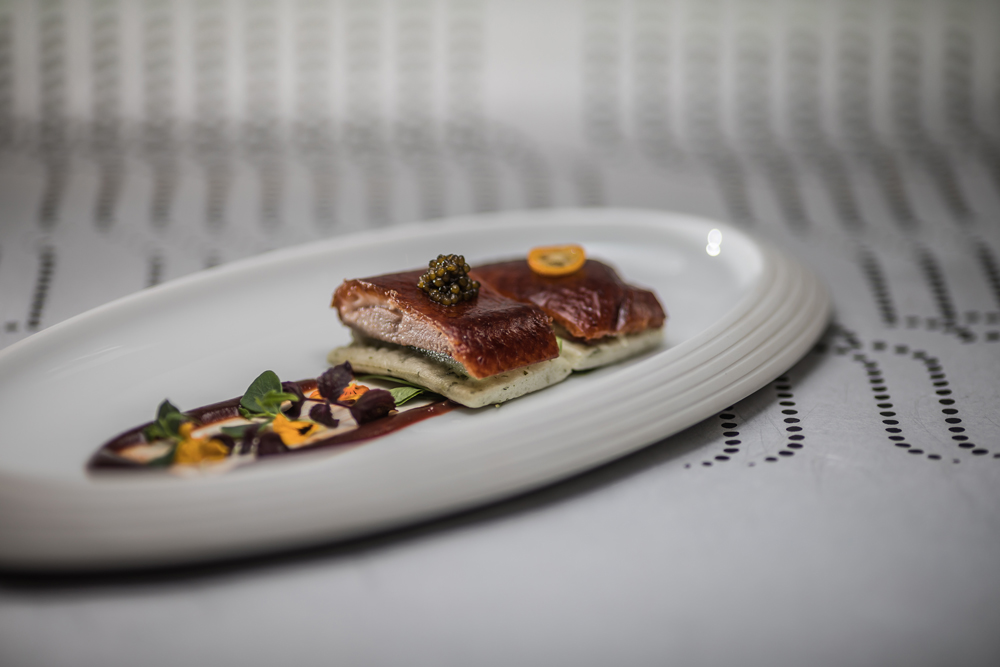
HKK’s Peking duck has often been recognised as a standout dish from HKK’s menu. Can you tell me how you adapted it for the Emperor’s Feast menu for Chinese New Year?
For this special Cherry Wood Roasted Peking duck I presented it with the combination of imperial caviar, foie gras, and kumquat as a bite of the soul for the menu. We have plated the dish beautifully to make it feel even more luxurious and with the background of the jade and gold emperor banners I think guests have really enjoyed it.
What is your process for finding the right drink pairings, both alcoholic and non-alcoholic, for your tasting menus?
We have a very strong beverage team to find the rights drinks pairings. Our cocktails and wines choices are definitely superior. The beverage team all taste the menu and work together to build a drinks flight that not only works with the [usual] menu, but also the entire Chinese New Year campaign.
How have you integrated Chinese ingredients like sea cucumber and yu fungus into your food?
We are always trying to introduce authentic Chinese ingredients and add innovative elements into our newly designed dishes. We want to offer guests a new experience and surprise them with new flavour combinations that they haven’t tasted before. I used sea cucumber in the Chinese New Year dish ‘Monk jumps over the wall’, which is one of the culinary dishes for Chinese people and dates back to the Qing Dynasty.
This dish contains 18 kinds of main ingredients including sea cucumber, abalone, scallops, dang ginseng, mushrooms, ham, chicken stock and more. Rather than a clear soup, I blended the ingredients to form a thick soup which makes the flavours more balanced. Moreover, the scallop noodle dish with yu fungus featured in the Chinese New Year menu uses a jade coloured chive sauce symbolising immortality.
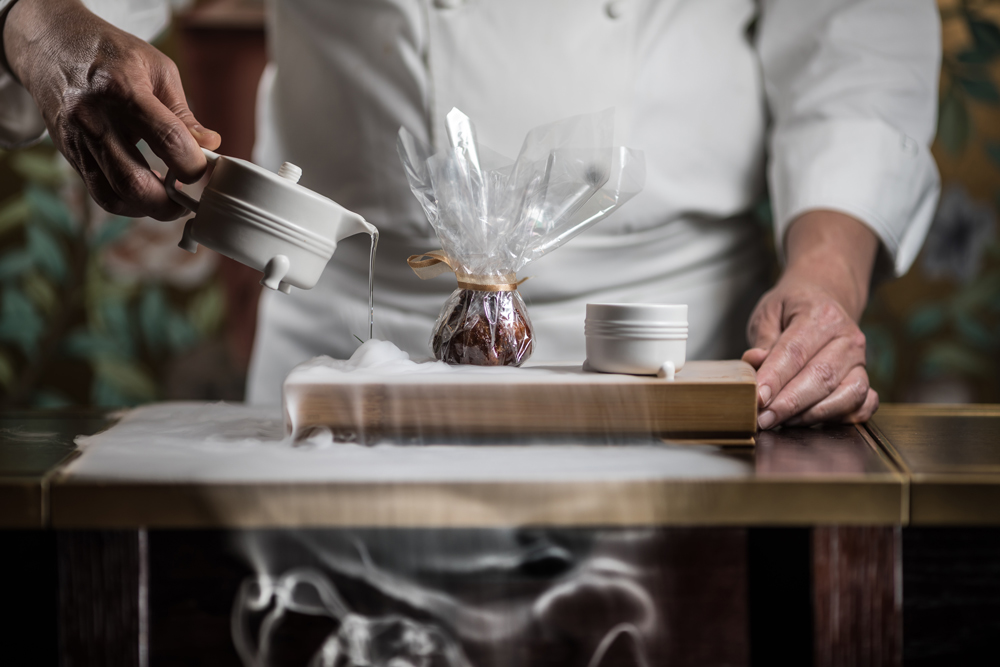
How important to you is using local British ingredients?
It emphasises the point that with HKK we are taking guests on a culinary journey. I like to use lots of Western ingredients to have a nice combination of Chinese food with Western cultures. There are lots of different cultures surrounding food in northern and southern China, and also for Chinese people in different countries as well. That is why I think using local ingredients is a part of culinary culture.
We get most of our ingredients locally. We’re really lucky in the UK, as we have such a variety of local producers. For example, the Dingley Dell Pork we use is from a rare breed of pig originating from Suffolk; the lamb is from the Welsh Rhug Organic Far; and we use local seasonal shellfish and vegetables too.
Can you explain the reason for the names behind some of the dishes, including ‘Emperor’s bite of spring’ and ‘Monk jumps over the wall’?
Spring rolls are hugely variable in today’s Chinese cuisine but the actual story of the spring roll comes from the season of the spring where it was traditional to welcome the arrival of spring and pray for good luck at the start of the new year. They gathered a variety of different spring vegetables and seasonal ingredients to be placed on one plate and rolled into a pancake. The spring pancake has also been used as one of the royal dishes, which emperors offer to his ministers as a reward in the beginning of the spring to welcome the season.Our ‘Emperor’s Bite of Spring’ takes this inspiration and uses authentic ingredients such as sea cucumber but also black truffle.
The reason why the other dish you mentioned is known as ‘Monk Jumps over The Wall’ is there was once a scholar was cooking and preparing this dish next to a temple. The strong aroma of the dish spread over to the temple and one of the monks of the temple, who was meditating, was tempted with the nice aroma and jumped over the wall just to try this dish.
For more info on the Emperor’s Feast tasting menu, visit hkklondon.com/our-menus
The two-Michelin starred chef shares her lifelong fascination with a rare pepper that has become the cornerstone of Basque cuisine
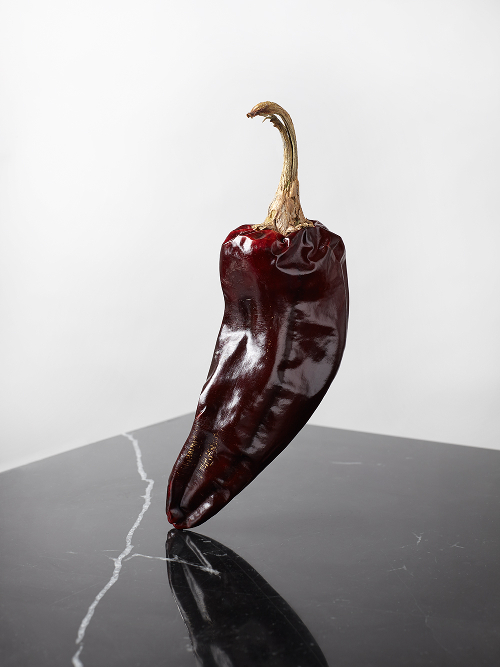
In the Basque country you never use black pepper, you always use piment d’Espelette (Espelette pepper) to season ingredients. That’s our culture, so I have always cooked with it.
It’s not a very strong pepper; it’s piquant, a strange combination of sweet and spicy flavours. I get mine from a little provider in Espelette, in the Labourd province.
It’s a small and very unique culture, and in order to be sold as piment d’Espelette, farmers have to follow some strict rules. For example, you can only water them once after planting. After that, they’re only allowed rainwater, unless the grower is given special permission from France’s agricultural regulator.
We worked with a small dairy producer to create an Espelette pepper butter, which is now on the table at the beginning of lunch and dinner at all of my restaurants. It’s ideal for seafood too – poached lobster in this butter is amazing.
It’s a really nice pepper that’s very flavoursome. Once tried, it is never forgotten; you will never want to cook with anything else.
Hélène Darroze’s eponymous restaurant at The Connaught hotel, London, has two Michelin stars.
This article is taken from PORT issue 19, out now.
The son of three-Michelin star chef Bernard Pacaud chats to PORT about reviving an iconic French eatery under his father’s guidance
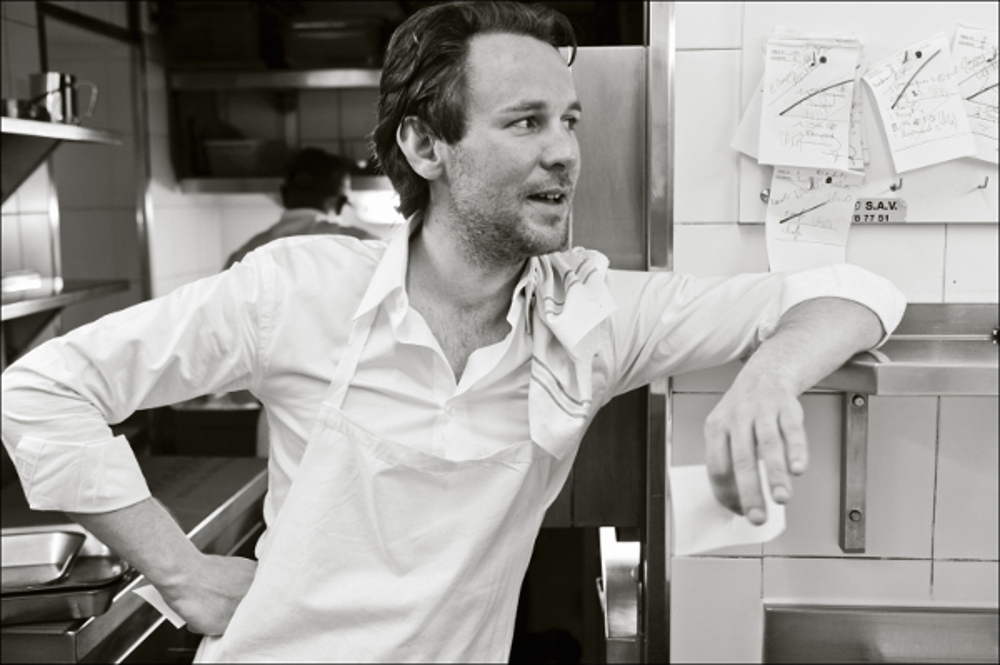
Mathieu Pacaud was just 15 years old when he started to learn the strict discipline of the haute cuisine. Despite being so young, he was fortunate enough to gain a place at the respected restaurant Le Jamin in Reims, France, under the watchful command of esteemed Benoit Guichard – once labelled ‘the world’s best chef’, by the French Government at the time.
Pacaud took this experience with him and embarked on a seven-year stint at the three-Michelin star L’Ambroisie. It was here where he really forged his reputation, working his way up to reach the position of Chef, giving him the privilege of working alongside his father, the venerable Bernard Pacaud.
Today, Mathieu is one of the masterminds behind the rebirth of historic restaurant Le Divellec (reborn as simply Divellec). Here, we chat with Pacaud about Divellec’s novel menu, reinventing French cuisine, and bringing the traditional atmosphere of L’Ambrosie to Asia.
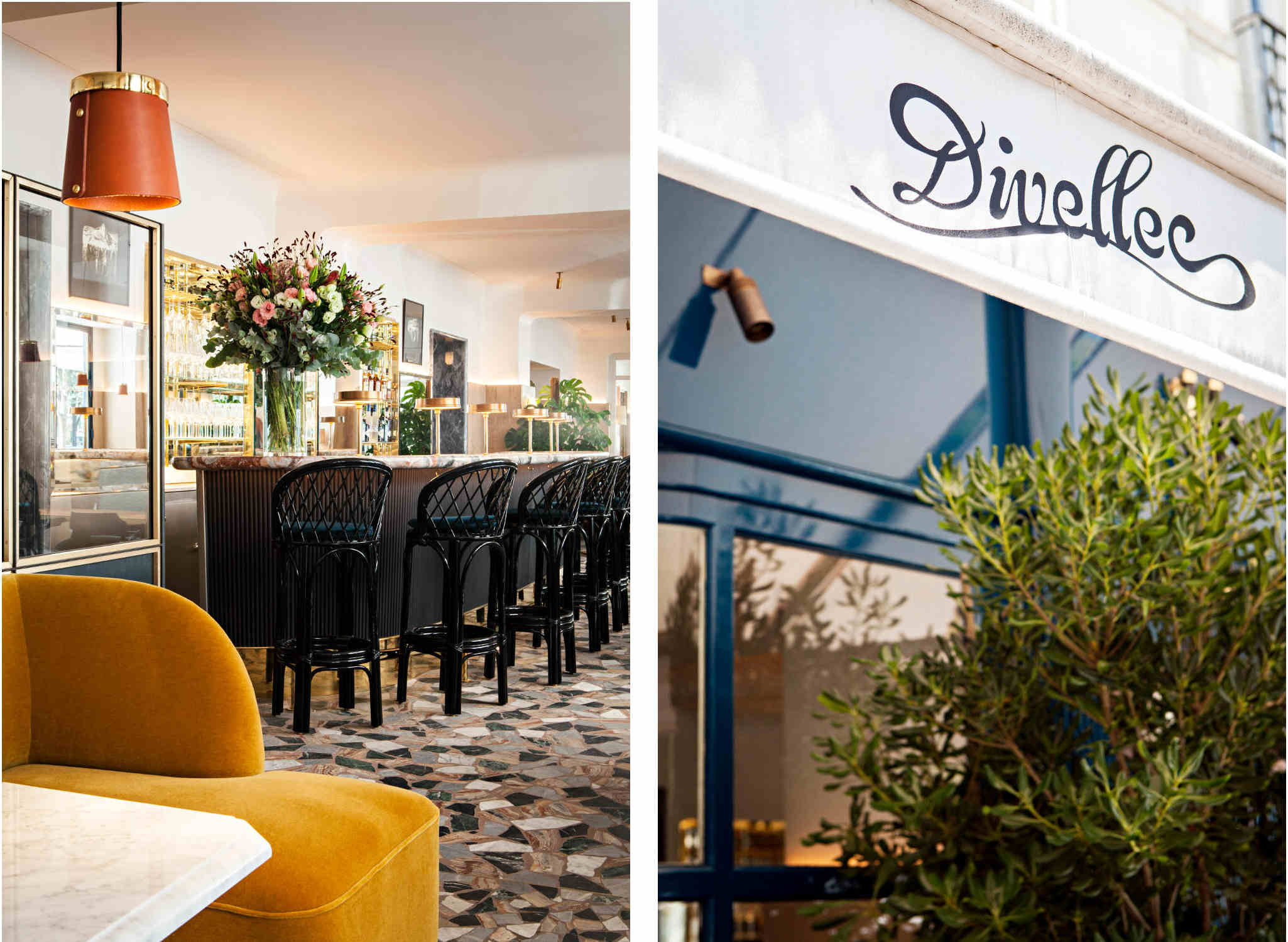
You started your career at age 15. What do you recall from that early beginning and the key lessons you learned?
My father sent me to the restaurant Le Jamin thinking I needed to be confronted with a tough experience, as I was bored and unruly at school. It was a tough experience indeed, but I loved every bit of it, maybe because of the adrenaline you have when you are part of a brigade, or maybe because I felt that it was changing me for the better.
I learnt my first recipes and techniques a LeJamin. But, more importantly, I learnt the importance of being organised, of keeping my area spotless, of obeying to the chef, which are the first essential steps of learning the job.
What drove you to move to Beirut at the age of 20?
I felt that it was time for me to go abroad, I had the urge for living a new experience. I wanted to taste foods and dishes I had never heard about…I wanted to hear a language I did not understand. Beirut seemed far from anything I had known before: it was both exotic and unusual.
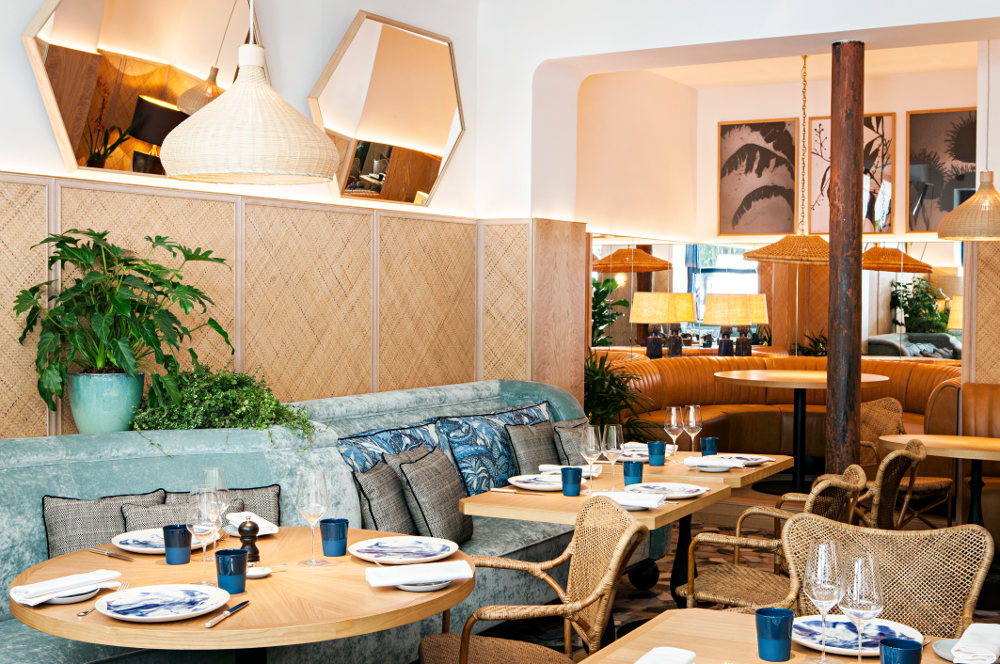
What have you learned working alongside your father, the laureled chef Bernard Pacaud, at L’Ambroisie?
It’s not easy to work in the restaurant of your father, especially when the place is considered to be an institution. My father was aware of that and he wanted me to earn the respect of the other brigade members, so he placed me at the bottom of the ladder. It took me seven years to work my way up and to reach the position of chef alongside my father.
During this time, I learnt the pillars of French cuisine: how to make a proper jus de viande, how to get the seasoning right, or why it is just impossible to do three-Michelin star cuisine without exceptional products. I think there is no better place than L’Ambroisie, and no better chef than Bernard Pacaud to understand the importance of such knowledge. They both embody the respect for French cuisine and the respect for the best products.
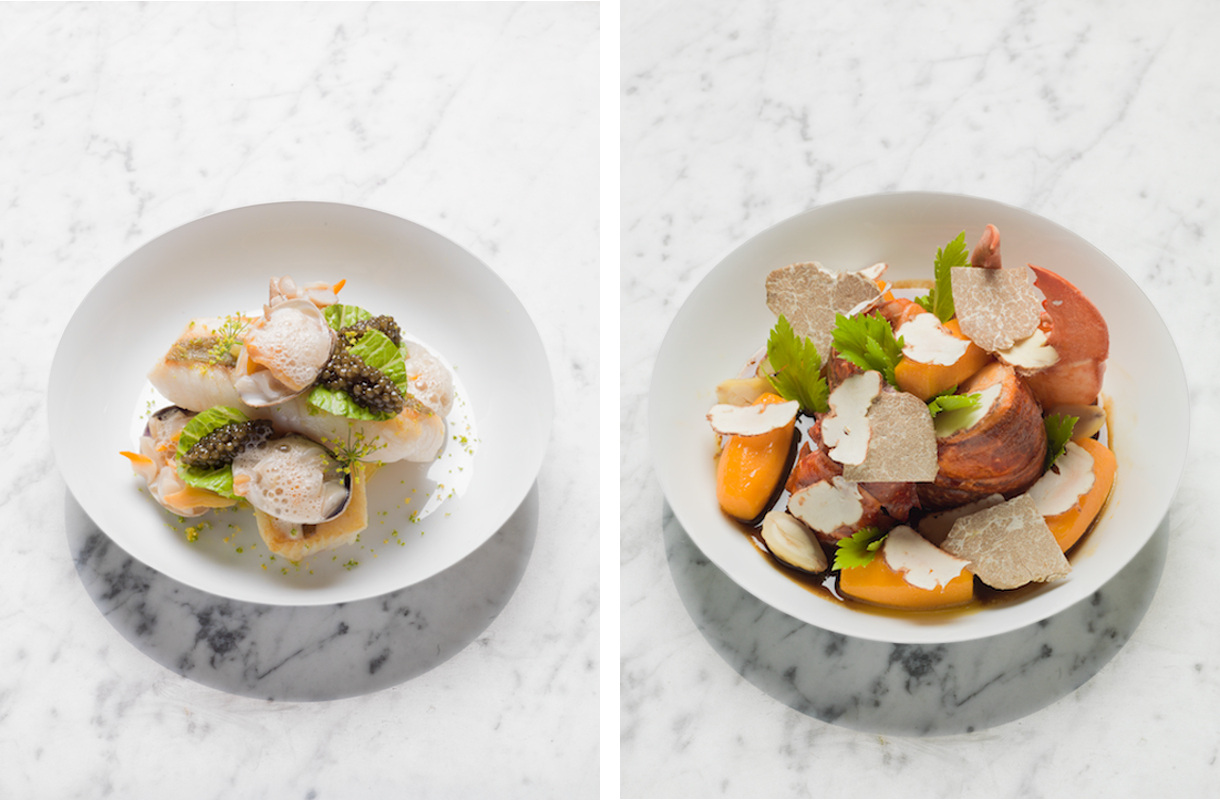
Le Divellec is one of the most famous seafood restaurants in Paris. How does it feel to be part of the reopening of a place with such a decorated history and role in French cuisine?
It is really a privilege to be part of the second birth of such an institution. Aside the political legend that the restaurant embodies, we also have to remember that Jacques Le Divellec was a leader and precursor in his field – he was the first chef to serve carpaccio and ceviche in Paris, for instance. I would like Le Divellec to keep this leading role in the reinvention of French cooking.
What was the process of transforming Le Divellec into a contemporary restaurant and the thinking behind it?
We wanted to bring something new and reinterpret the whole concept. At Divellec today, vegetables are as central to the menu as seafood is, as it is a part of my personal cooking style.
We are very lucky to have our vegetables grown and delivered directly from the gardens of our summer restaurant in Corsica, located in the world-class Domaine de Murtoli estate. We also wanted the restaurant to be more contemporary and relaxed, which is why we tried to decorate it as an architect would decorate his own apartment.
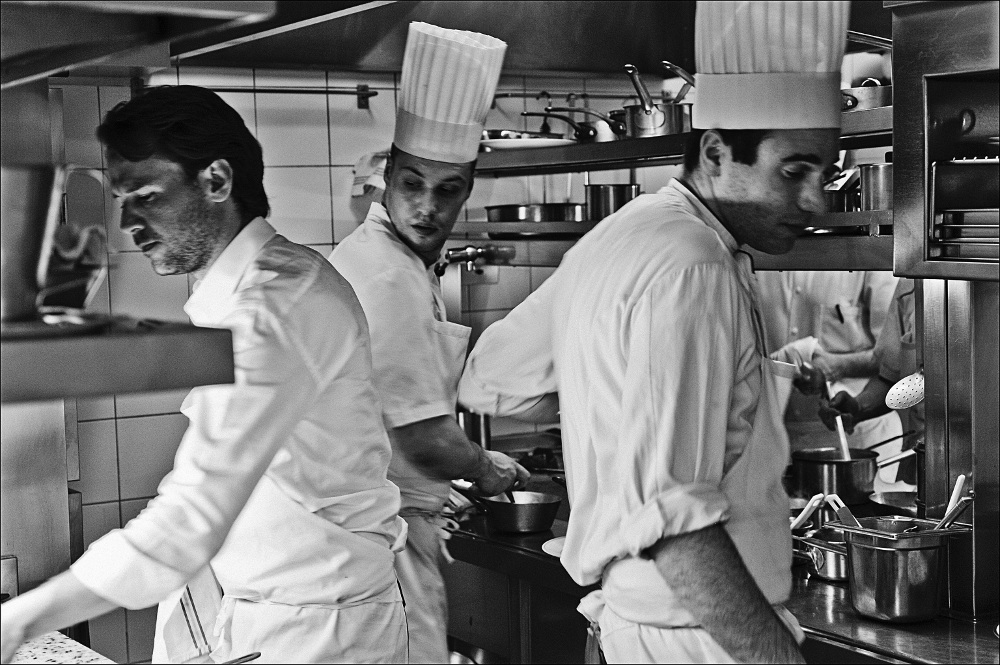
Le Divellec’s menu is a co-creation with your father. How did you both contribute?
We really worked together on the menu. It would have been a disaster to have some dishes created by my father on one side, and some dishes created by me on the other side. We knew we had the same priorities, which was to source amazing products, to do our best to sublimate them and to give them a modern twist.
What is your favourite dish on the menu?
We have recently added to the menu a salmon-based dish – sorrel salmon, Paimpol beans and Mostarda di Cremona – that I think reflects the spirit of our restaurant perfectly well. The sorrel gives a traditional touch, as it is a combination of flavours that has been working well in the kitchen for decades, while the Mostarda di Cremona and Paimpol beans provides a sense of novelty and completeness in the flavours. We have been working a lot on this dish to try and find the perfect way to cook it.
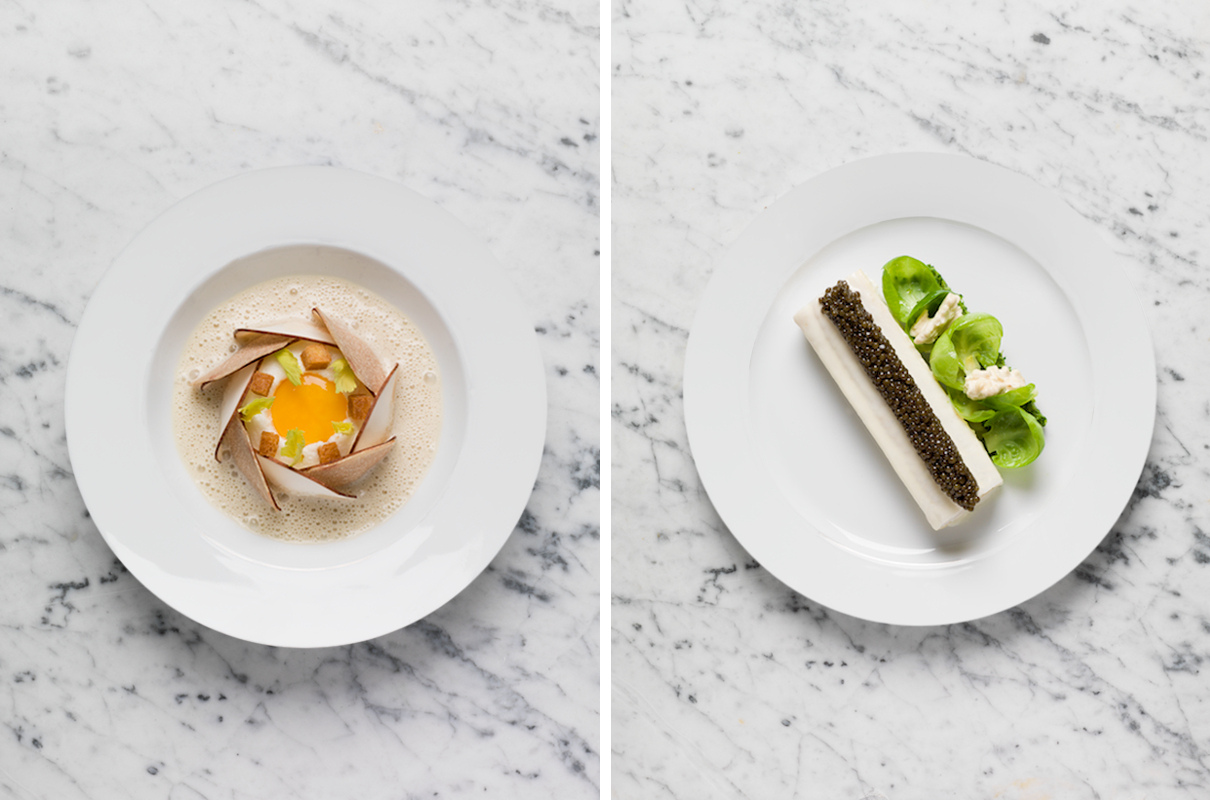
You are also planning to duplicate L’Ambroisie in Macau, Asia, inside The 13 hotel. How do you plan to adapt the traditional atmosphere of L’Ambroisie to a hotel-casino?
Our goal is to present the guests with the possibility to be transported to Paris for lunch, or a dinner. We have asked our suppliers to recreate the same plates, cutleries, glasses. The executive chef and the restaurant manager of L’Ambroisie Macau have worked for several years at L’Ambroisie Paris and are familiar with the atmosphere we want to create. Our goal is truly to recreate the experience one could have in Paris.
Port and Levi’s® Made & Crafted™ meet Michelin-starred chef Ollie Dabbous to discover how he’s using simple techniques and unearthing unique British ingredients to shape the future of the food industry

In a technology-obsessed age, where over-designed furniture and deconstructed food dishes snapped from above can command more online coverage and ‘likes’ on social media channels, how do modern-day creatives resist the lure to overcomplicate things, while still continuing to develop? To answer this, we meet Michelin-starred chef Ollie Dabbous, who is styled in Levi’s® Made & Crafted™. Like Dabbous, Levi’s® Made & Crafted™ – the contemporary, sophisticated collection within Levi’s® – is creating tomorrow’s classics by building on a successful reputation for quality product, using meticulously sourced materials (like Italian hand-waxed leathers and proprietary selvedge denim) and state-of-the-art production techniques. Here, we sit down with the ‘chef’s chef’ and delve into his approaches to innovation.
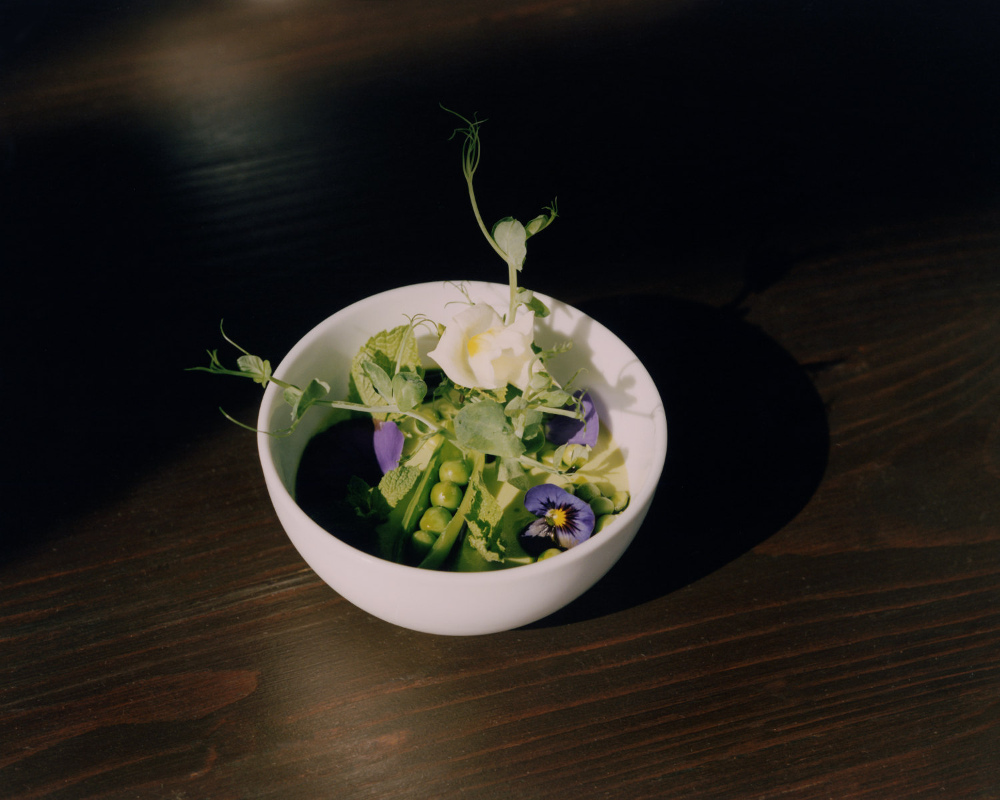
When Ollie Dabbous first opened his eponymous London restaurant in 2012, he couldn’t have predicted just how successful his first few years in business would be, given that he was relatively unknown (despite having trained under Raymond Blanc at Le Manoir), in a crowded sector. Following gushing reviews from some of the UK’s leading critics, such as AA Gill, the bookings wouldn’t stop coming. But what made it all the more surprising is that he built such a rapid following with restrained, British cooking that refused to latch itself on to any food trends of the time. “It’s harder to be good than original. Anyone can be original; it’s easy to be original,” Dabbous tells me confidently, before explaining why he feels there’s more skill in making a classic lemon tart from scratch than placing the deconstructed elements on a plate. Sure, the latter may make for a better photo, but it’s unlikely to taste as good as the original. “I think nowadays people don’t really want food that’s ‘chefy’ and technique driven. I think they want something a bit more natural, a bit more seemingly effortless,” he adds. “Yes it’s nice to be wowed, but equally I think people just want a tasty plate of food rather than a showcase of the chef’s skills.”Earning a Michelin star just eight months after opening only strengthened his resolve, and in the years that followed, he has injected more and more British produce into his restaurant’s lunch, dinner and tasting menus.
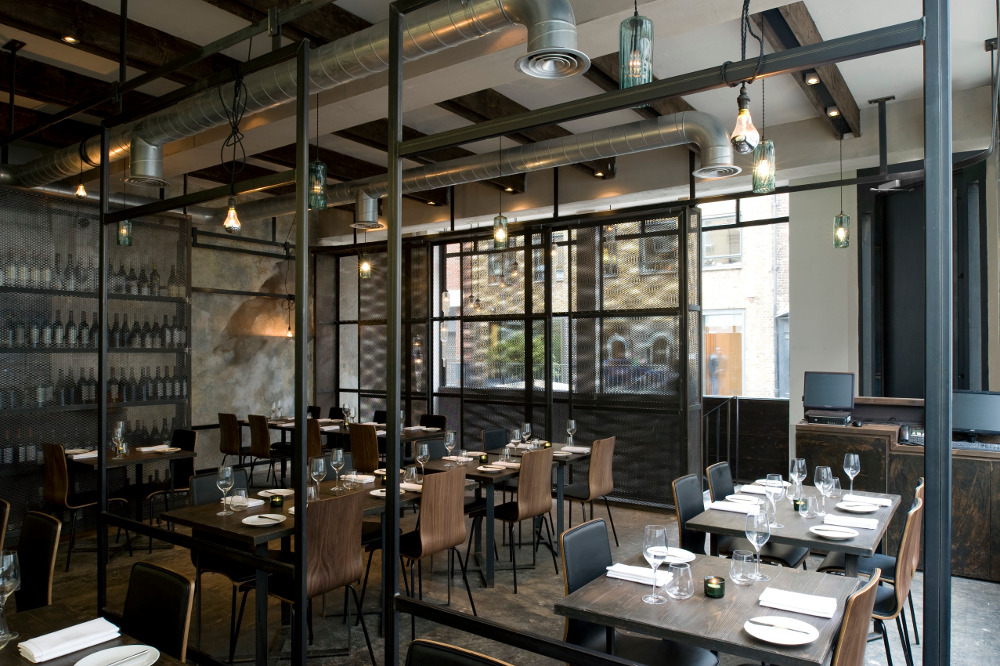
“I’m happy to say we work more with British farmers and butchers ; you get a more tailored service,” he says. And the treatment of the ingredients after sourcing is, of course, just as important to Dabbous. “The more you process food, the more you can actually detract from it. If you get an amazing organic sand-grown carrot, and the flavour’s phenomenal, or an amazing rib of beef – just put it on the barbeque. You don’t need all this refining.” It appears to be a proven formula, given the accolades he’s received. But winning the plaudits of gastronomes and critics alike must bring with it a pressure to constantly develop new dishes, techniques and toy with the ‘new’. Not so, according to Dabbous. “A lot of young chefs are guilty of thinking they can kind of reinvent the wheel, but I think the role of the chef is to take great produce and make it better,” he says. “Sometimes you don’t have to do a lot to it. Sometimes, to make it as good as it can be, it might mean that you’re actually doing something quite classic.” And that’s because, ultimately great taste endures over great presentation.
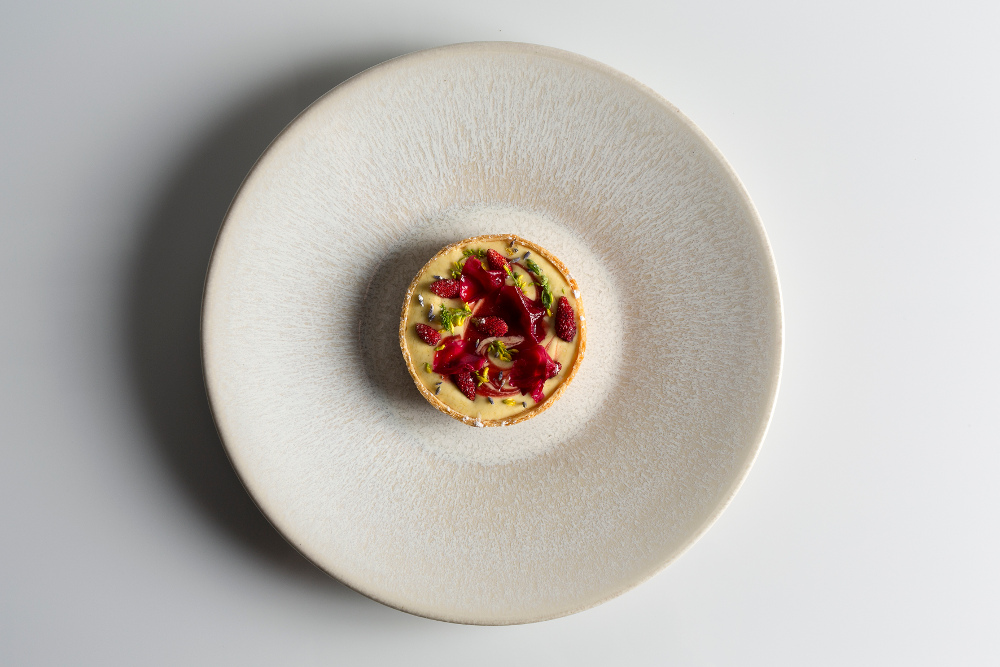
“You remember great steak, great fish and chips, a great lasagna,” Dabbous continues. “None of these things are aesthetically pleasing or photogenic, it’s all kind of basic, but they’re things that give pleasure. And that’s a thing that people come back to – it’s why basic food, done well, will always going to exist.”
This self-assuredness and insistence on championing simple British produce is likely why Dabbous has become the ‘chefs’ chef’. But more than that, he seems to have a deep understanding of what really drives customers through his doors, week in, week out. “Whether now, whether in 20 years’ time, value for money is always going to be important to customers [as well as] friendliness and good service,” he says. “With food, yes everyone has different opinions on things, but there’s something quite brutally honest about flavour – something is either delicious or it isn’t.” Simple, really.
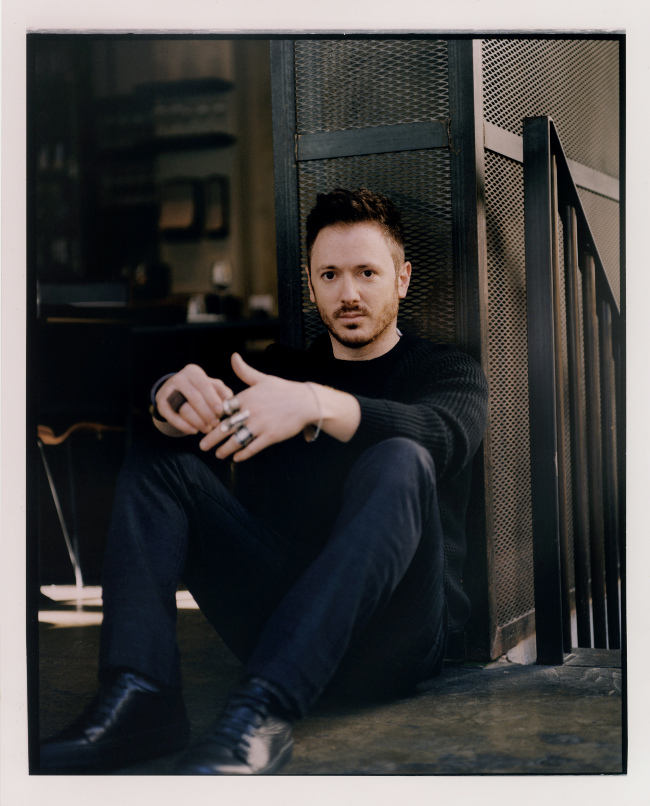
Styling Scott Stephenson, Alex Petsetakis
Photography assistant Liberto Filo
Grooming Davide Barbieri at Carenusing Bumble and bumble
Levi’s® Made & Crafted™
This story appears in PORT issue 19, out now.
We meet British chef and Fat Duck alumnus James Baron to discuss how he went from being a waiter in his hometown to a head chef at a top Austrian hotel
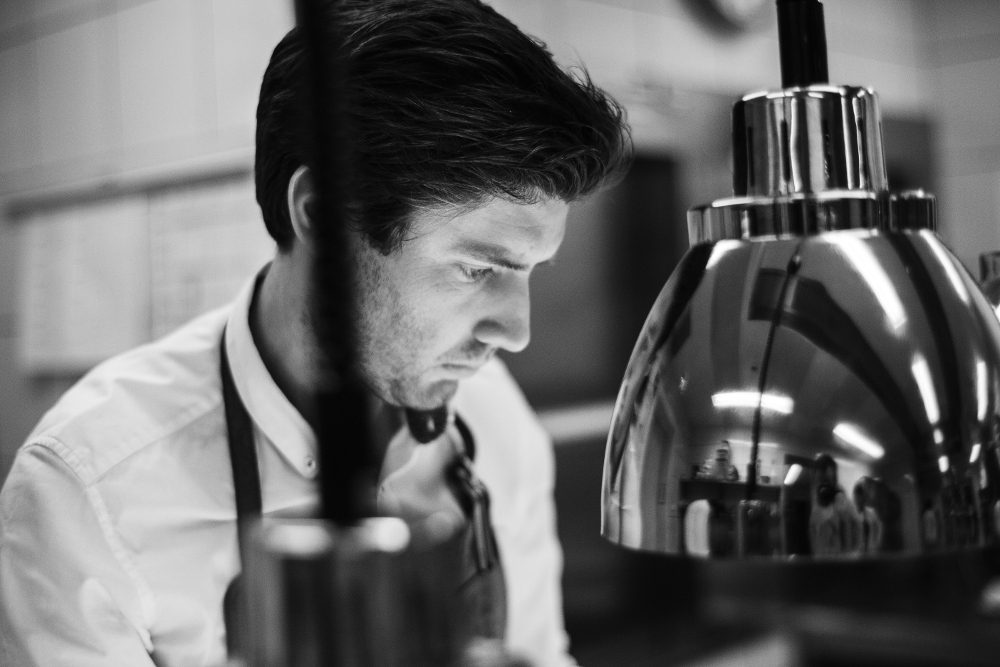
The dining room at Hotel Tannenhof, where British chef James Baron has recently come to reside, looks out onto a panoramic of mountains. It is located in the scenic St. Anton – a dichotomous ‘town’, which balloons to a city of 25,000 in the winter for the ski season, and shrinks to a village of 2,500 in the summer. The location is ideal for a creative chef: the mountains are not only beautiful themselves, but provide immediate access to traditional Tyrolean ingredients. Alpine herbs are easily foraged from within a 20-minute radius, and the cowbells from the local dairy can be heard clanging from the hotel’s reception desk.
James Baron began work at Michelin-starred JSW in his hometown, Petersfield, England, before completing work experience at Heston Blumenthal’s Fat Duck (his job was assembling a dish of oysters, passion fruit, and black pepper). Encouraged by a desire to travel, he turned away from the London restaurant scene and worked his way up in Michelin-starred kitchens across the Continent, and learning both French and German along the way. In late 2015, he was announced as head chef at Hotel Tannenhof, a five-star residence in the Tyrolean Alps that contains only seven suites. Within his small team, Baron is responsible for providing consistently excellent and imaginative services for the hotel’s diners, whether that’s a barbecue on the mountains or an eight-course evening menu. The hotel insists that no returning guest can be served the same dish twice, meaning Baron must often come up with menus on a quick turnaround.
Here, we sit down with James to discuss his local suppliers on the mountain, the benefits and challenges of running a kitchen in a five-star hotel, and why he gave up a potential career in architecture for food.
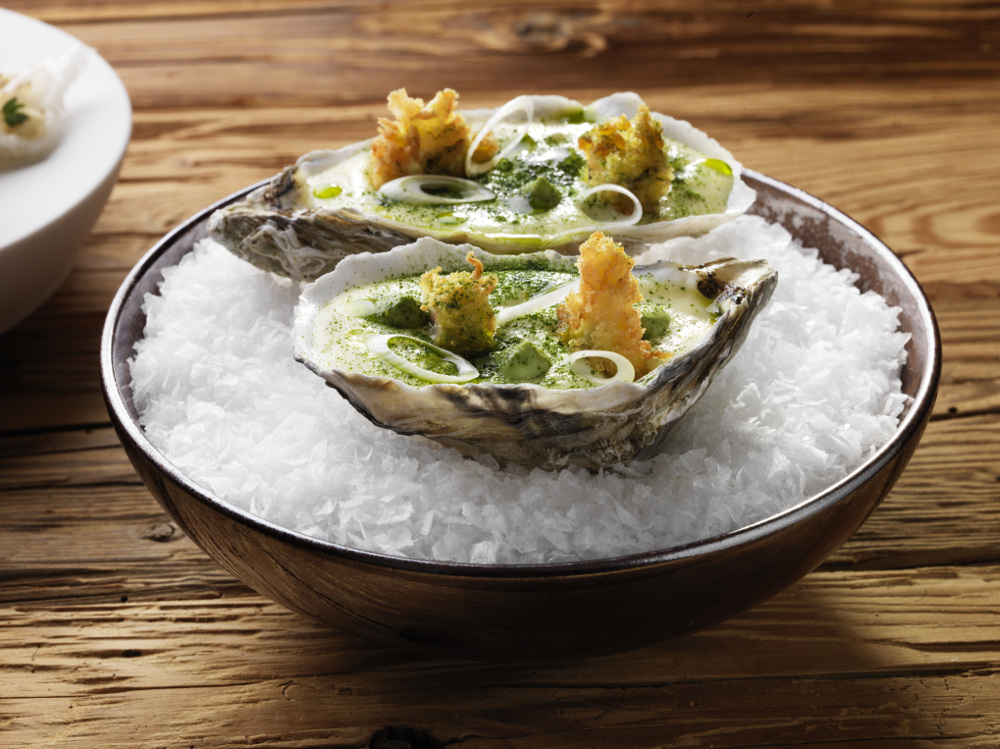
When did you start cooking?
I had a position at university to go and study architecture. I was working at a Michelin-starred restaurant, JSW, when I was doing my A-levels as a waiter. I decided out of the blue that I didn’t want to go to university, much to the shock of my parents, and that I wanted to be a chef. I had a year out and started as an apprentice at JSW, then stayed there for almost four-and-a-half years.
The first time I worked there was in the kitchen, because the head chef, Jake Watkins, was on his own. He didn’t have a Michelin star at the start, and on a Friday and Saturday night, he just had a student to help him out – I was that student. I got the bug from that, but I was always interested in cooking… how my parents cooked, how my grandparents cooked, etc. I suppose that was the real thing that lit the fire.
What did you do after that?
After that, I knew I wanted to travel. I had a few choices of where to work in London – there was a place in New York, but I knew I wanted to do something completely different, and learn a language. That’s why I ended up in Switzerland. As a chef, you have a great opportunity to travel and learn new languages, because it’s a craft you learn with your hands. If you can’t speak the language at the start, people are patient. And you can still do the job.
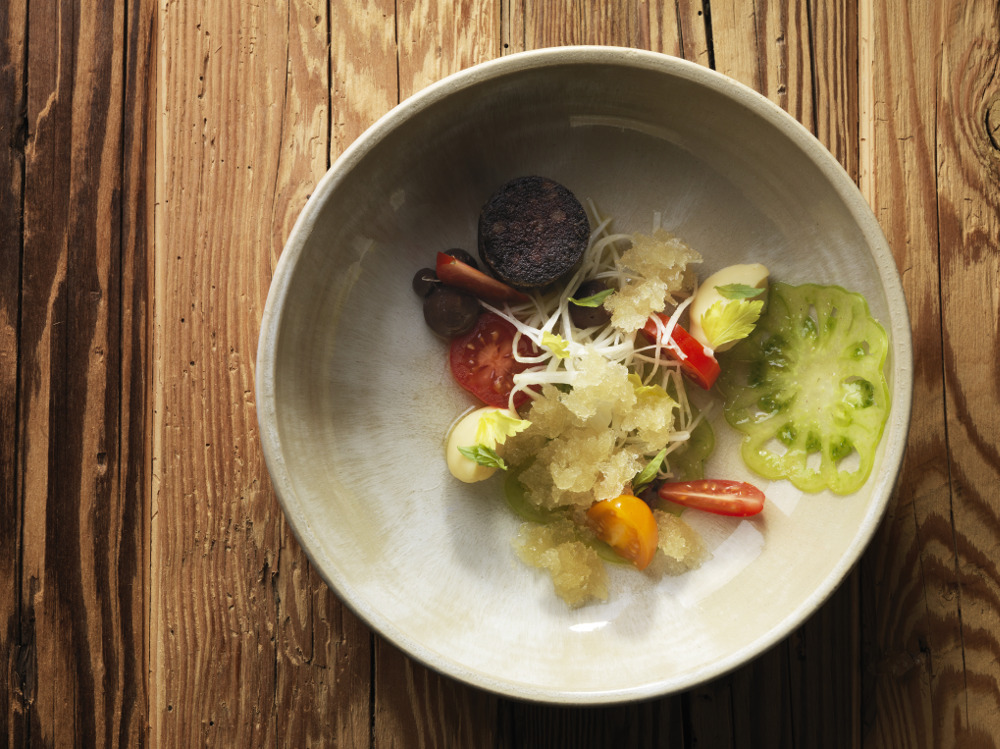
How do you find communicating with suppliers?
When you talk to suppliers, then it gets hard. You really have to speak the language. We only use local suppliers. My German is now perfectly fluent, and I’ve got a very good relationship with them. Tomorrow morning, I’m going to the top of the mountain here to meet the man who makes cheese. He supplies us with our cream to make butter, which we churn at the table when serving. We have our own cow up there too: Liza.
We have a guide who does a tour of the mountains. She knows all the herbs that grow around here, or, she says she knows 90 per cent of them because there’s so many. It’s impossible to know them all, there’s so much to learn.
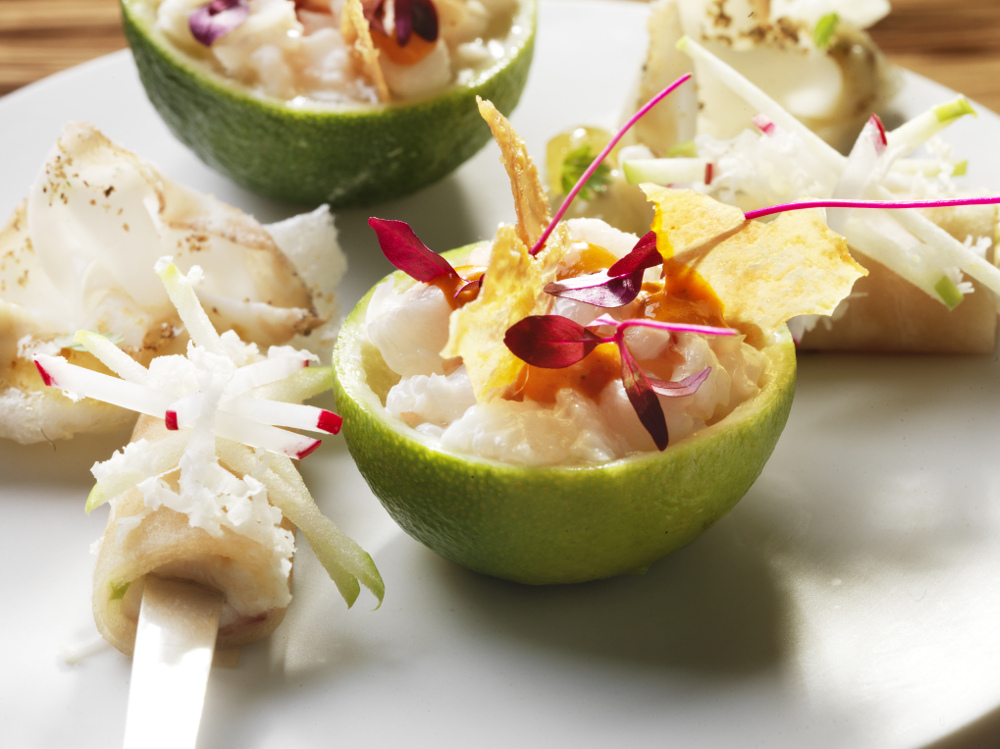
How do you create a dish?
I start with a blank sheet of paper – I draw, I write notes. I don’t think anyone could understand it except me. It goes up, down, round the other side, then back again. I think everyone has their own unique way of working. You can be creative anywhere. Sometimes it just comes to you, and you take advantage of it.
Often, I start with an ingredient or two. The tortellini dish is a good example, as it began with a walk on the mountains and I wanted to have one dish that represents the mountains rather than the whole menu. We got everything from within a 20-minute radius, so the idea of that dish is that it’s everything from here.
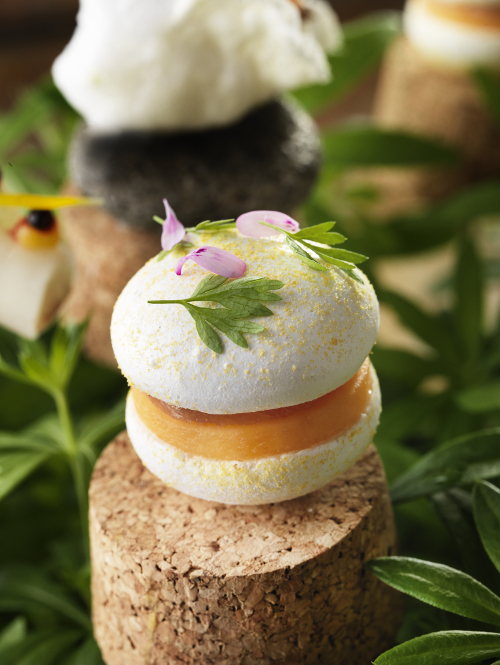
What specific Tyrolean influences can you see on the menu?
We try and use a few traditions. In winter, a big tradition here is a doughnut filled with sauerkraut. Sweet and sour, basically. I had one at the Christmas market in St. Anton – I think the owner here gave it to me – and at first I thought, this can’t be good. And then I tasted it, and it was great! We made our own version, a mini one. We used our own sauerkraut, and made a vinegar powder which we rolled the sweet dough in. It’s a classic thing in this region. With what we create in the kitchen, we want to evoke memories for people eating here, relating moments to when they were at a Christmas market.
We try and use products from here, but I believe that we need to have broader sources – so we can keep the consistency, and keep surprising people. I feel a responsibility to deliver something quite special every evening. I don’t want to just say, ‘it’s herbs again’, so it’s a challenge. We try to use the Alps – from Nice to Vienna. That’s the area we try to source a majority of our products from.
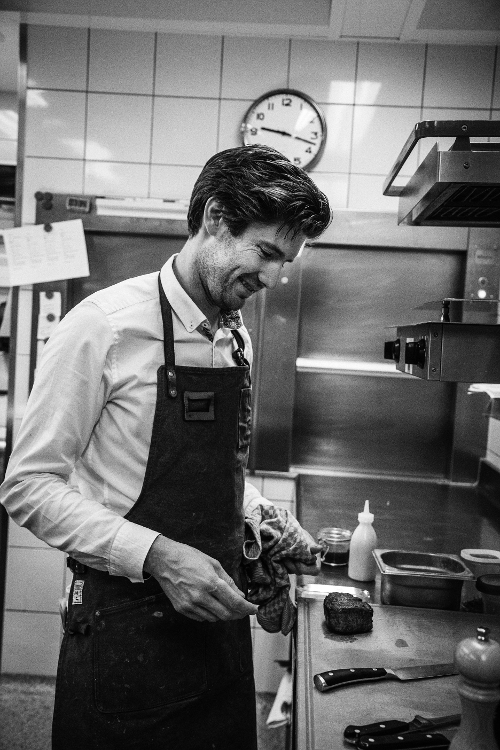
How do you think taste and visual senses work together?
I like art and design, but at the same time, there’s a happy medium to be found. My food has got to look nice, but it’s got to be warm too. There’s no point having three chefs round the plate with tweezers putting different herbs on a dish. I’d rather it look rustic, but still in an interesting way.
I really admire a few Swiss architects, particularly Valerio Olgiati – I’ve got lots of books of his. Photographers, I had a really good photo shoot recently with Rene Reiss. He’s also a big influence on me – his work and his person. We spoke for hours, and it reaffirmed my feeling of not too much fuss around the plate. The most important thing for me apart from the taste is that it’s hot as well – sometimes people forget the basics.
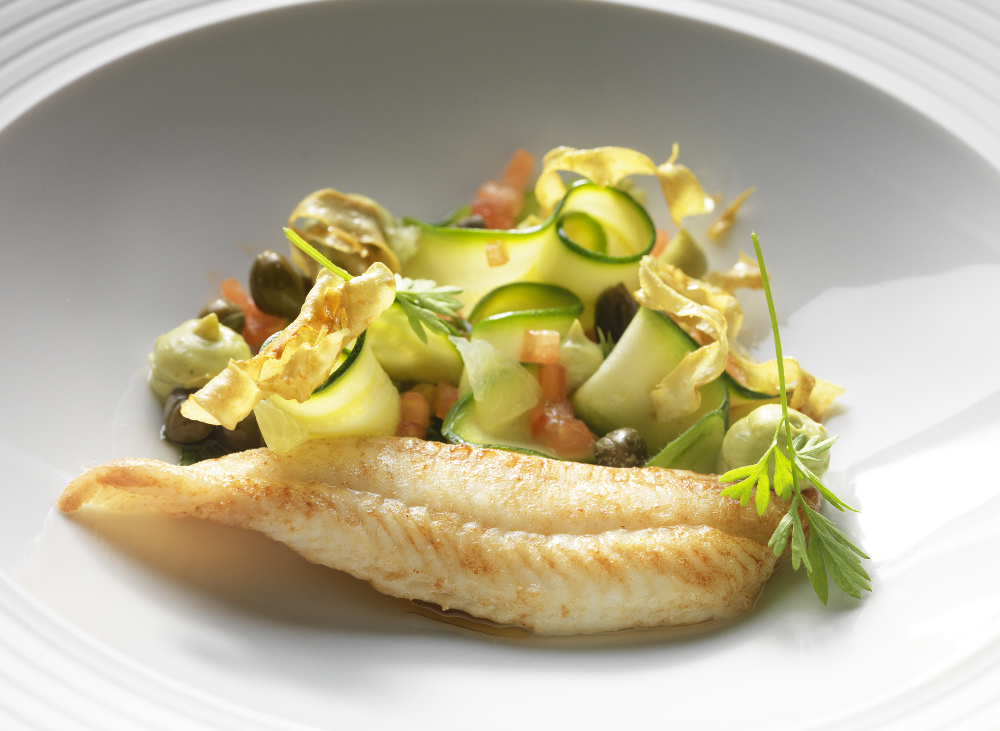
How do you find working in a hotel kitchen as opposed to a restaurant?
There are so many five-star hotels you can go to, and they’re so big that the head chef cannot see everything. Here, everything is in my line of sight. It’s easy to control and we make fewer errors.
We try to have a working environment where it’s friendly: we want creativity and we need creativity. We want to be innovative in what we do too. I think it’s really important not be shouting and screaming, because there’s no one who’s going to want to be creative in that atmosphere. Of course there’s times where there has to be discipline, that’s very important in a kitchen. But discipline can be achieved through normal methods.
It’s strange working in a hotel so small. There’s only seven rooms, so there’s a massive personal feeling and a personal touch. When the guests arrive, I talk to them directly, ask what their preferences are. One evening they might have the full eight courses, the second or third, I might ask if they have any special wishes. That’s all part of the challenge. Someone might ask for a barbecue on the side of the river, and we think, okay, let’s do it! It’s all part of the planning and the execution. We enjoy it and look forward to it. There’s not many hotels of this size and this standard around, so it’s a very unique place.
James Baron’s seasonal eight-course tasting menu is available from the Hotel Tannenhof restaurant in St. Anton, Austria
In the first of a new food series entitled ‘Elements’, we speak to the experts from east London pasta restaurant Savurè about the history of the staple ingredient in northern Italy
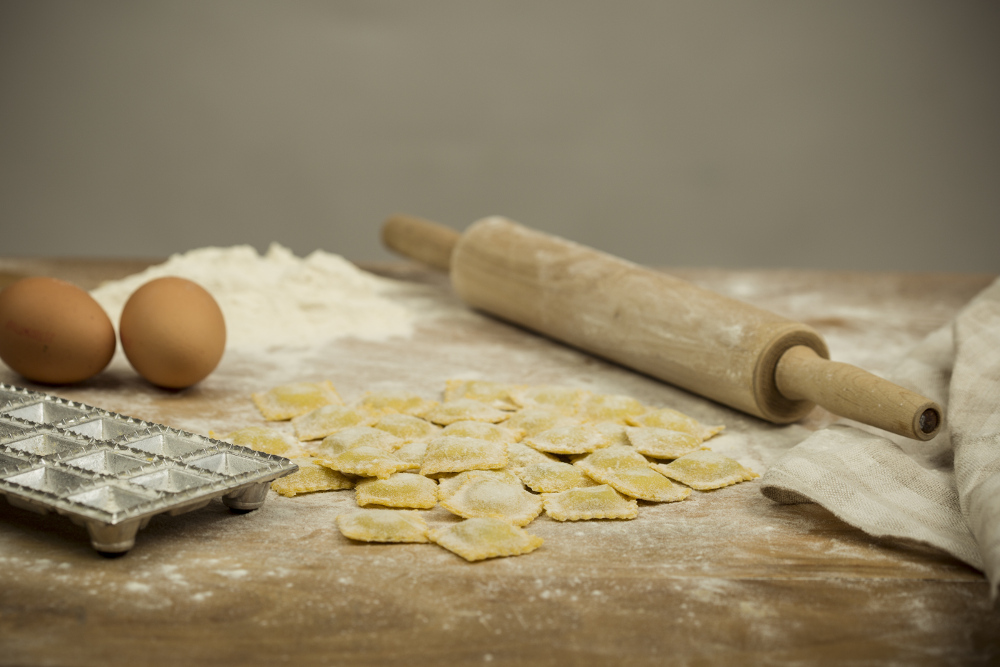
“Out of Italy’s 20 regions, Piedmont has a culinary tradition that is coloured by a history of kings and peasants. Historically, noble men ate northern Italy’s version of noodle, tajarin – knife-cut long pasta made with soft wheat flour and up to 40 egg yolks per kilo of flour; agnolotti, filled with roasted meats and seasoned with butter and Alba white truffle; or lasagne with ragù.
“A humbler pasta was favoured by the ‘lower classes’ — normally prepared with only four eggs, or potato gnocchi, leaving the use of meat (often giblets) for the feast days. Their regular pasta would be stuffed with ricotta cheese and vegetables.
“Northern Italy’s pasta is mainly prepared with soft wheat flour and eggs (sometimes only egg yolks). The main sauces are butter, which is perfect with the very expensive Alba white truffle, or butter and sage, roasted meat gravy, ragù. Modern times have enriched our centuries-old tradition of pasta-making with new ingredients such as tomatoes, fish, spices.
“The Piedmont region eventually saw the proliferation of new types of pasta made with durum wheat, semolina and water, such as spaghetti. This evolution was the result of massive immigration in the ’60s and ’70s, when a huge number of southern Italians came to Torino seeking jobs. They brought their spaghetti tradition to this foreign and northern Italian land.”
Savurè in Shoreditch, London, serves agnolotti, tajarin, and spaghetti, with 200 different combinations of pasta and sauce available
Interview Dizz Tate
We meet Virgilio Martínez Véliz, owner of the ‘Best restaurant in Latin America’ and the first Peruvian chef to win a Michelin star in Europe
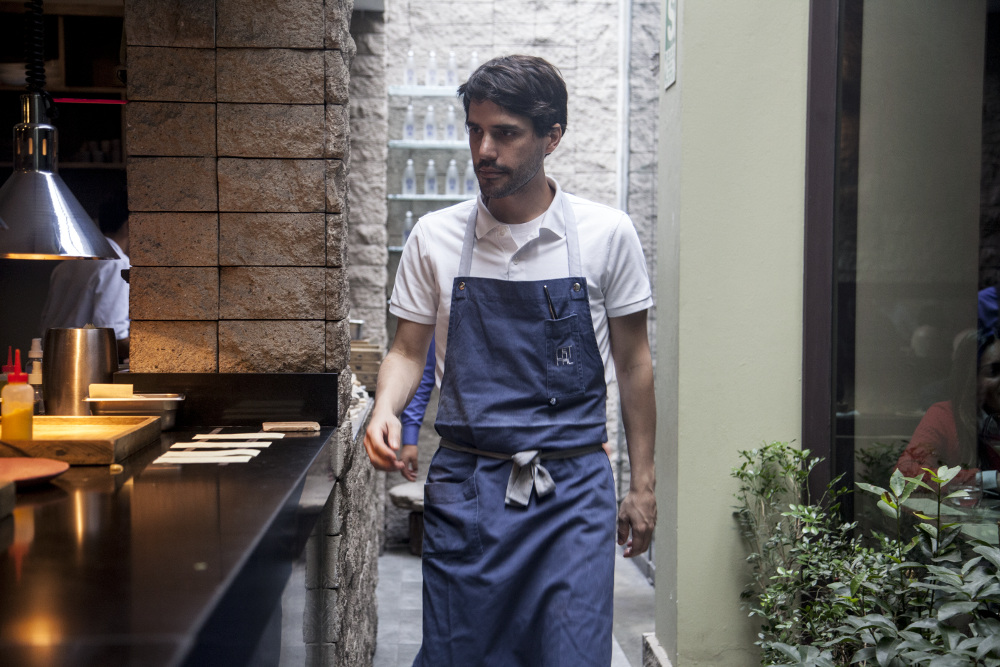
Chef Virgilio Martínez Véliz has garnered many accolades from his fast-paced career. His flagship restaurant, Central Restaurante (Central), opened in 2008. In 2012, it became the ‘50th best restaurant in Latin America‘, but by 2014, it made a significant jump, being named the ‘best restaurant in Latin America’, and the 4th best in the world. His popular London-based endeavour, Lima London, was awarded a Michelin star the same year, making him the first Peruvian cuisine to achieve the honour.
Véliz’s menus reflect the diversity of Peru’s cuisine. Next to each of his dishes he prints the ‘altitude of origin’ for the ingredients used, which, due to the geographical variance of Peru, can range from the highest point in the Andes, to the depths of the Amazonian forest and down to sea-level of Lima’s crystalline coast.
In addition to running his award-winning eateries, Véliz also oversees a side project Mater Initiative –a research organisation dedicated to registering all indigenous Peruvian ingredients, in order to communicate their value to chefs and their guests around the world.
We sat down with Véliz to discuss his unique career in a conversations spanning his passion for skateboarding, cheffing in kitchens around the world, and finally, his decision to return home to Peru.
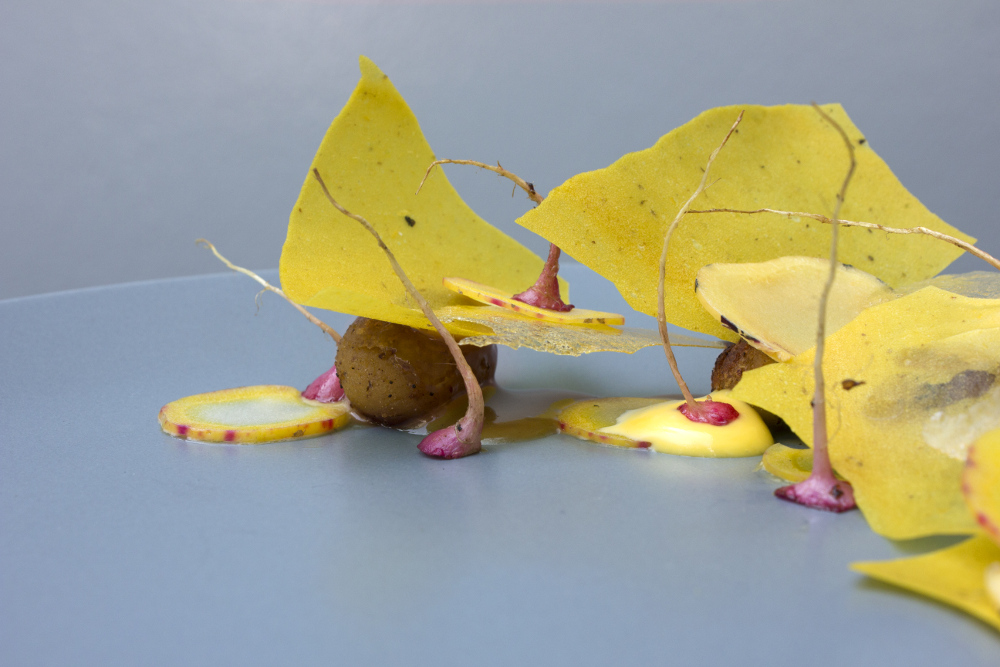
You almost became a professional skateboarder until you were injured. How does one go from skateboarding to cooking?
I truly wanted to become a professional skateboarder, however the injuries convinced me otherwise, and made me realise there were other ways to escape from conventional Lima in a turbulent ’90s Peru. In those times I felt I needed to experience other things; I wanted to travel, and cooking would allow me to do so. So I started studying and then working for a living.
One day, I stepped into the kitchen of a fine dining restaurant in London and I just knew – I felt the same positive feeling I felt with skateboarding. Quickly becoming obsessed with this world, I started reading a lot and practicing all day after my working hours… And I loved it.
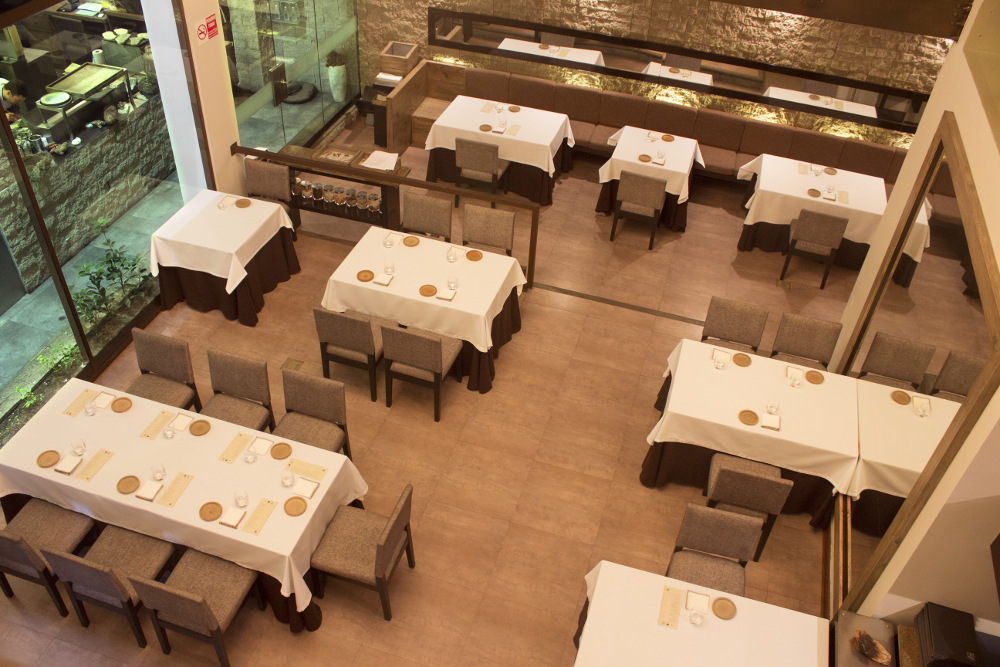
After your experience working in restaurants run by Spanish chef, Santi Santamaria, you went back to Peru to open Central. What prompted you to branch out on your own?
I actually worked for great Peruvian chefs before this, for example Lutece in New York, travelling around the world cooking for different chefs such as Gastón Acurio. And then, feeling mature enough to do so, I opened my own restaurant in Lima.
I am still learning how to grow and how to maintain the same passion of my early training years, and to inject that into my team, with Pía León (my wife and Chef de cuisine at Central).
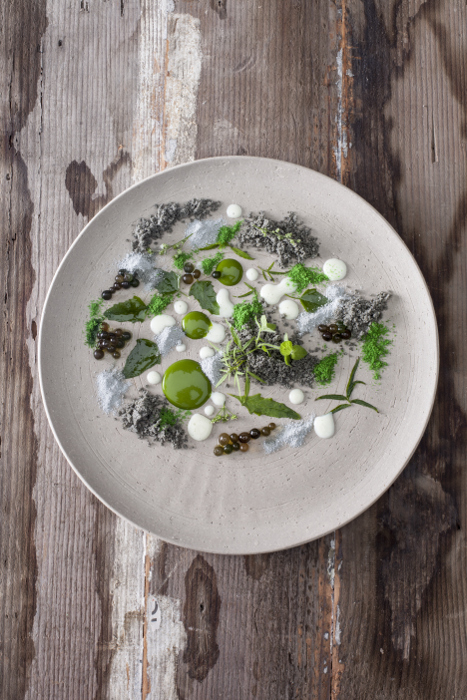
On your menu, you show the altitude of origin of your dishes, some as high as 14,000 feet. What are the benefits of using food that’s farmed at high altitude?
We felt the need to state altitudes when talking about ingredients, to show how diverse our country is. Also, in this territory, you could be at 200m above seal level and be in a coastal valley, or at 200m above sea level and be in a surreal Amazonian forest. As a result, much of the food is reflected in the ecosystems as well.
When you go higher, up in the mountains of the Andes, you find ingredients that won’t grow anywhere else because they belong there. Only at these altitudes do some of the potatoes, ocas and mashuas develop. They say in the Andes, the higher you climb, the deeper you have to dig for precious things.
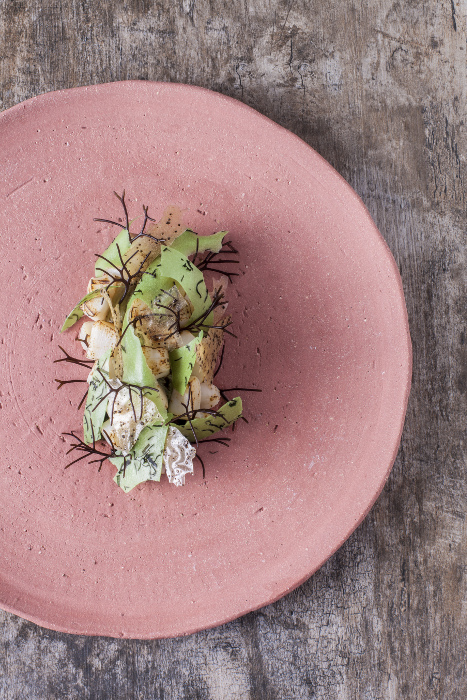
What is your relationship with your suppliers? How do you go about finding new ones?
Our team at Mater Iniciativa plan trips according to seeding and harvest seasons. Also, they look for sources of ingredients to collect (ones that are somewhere specific with no human intervention as algae, cushuros, wild plant species, etc).
We believe in the idea that every ingredient becomes richer when a community nearby the origin tells you about it. So we have been working on making these communities our suppliers. Even with the difficulties it may represent, such as access routes, logistics, and preservation of products, we still think it’s totally worth it.
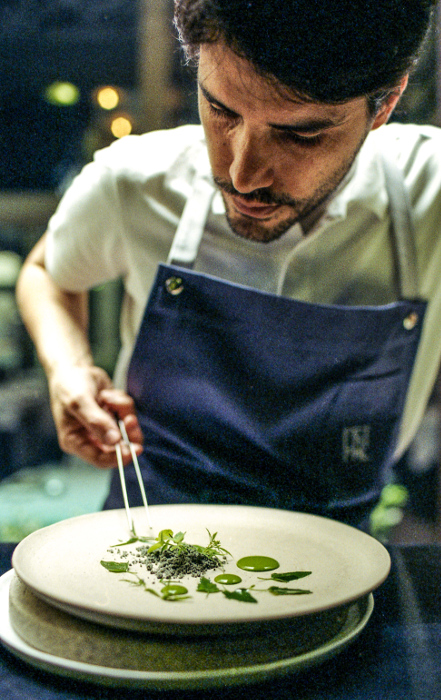
What are your main culinary influences besides Peruvian food?
There is traditional Peruvian food, of course, and also Peruvian ingredients. Both types have received influences from various immigrants: Spanish, Italian, Chinese, Japanese, African, Arab, among others.
Peru’s natural resources have been diversified thanks to our geography, and those cultures, as well as our own cultural heritage. When I travelled, I learnt more about other civilisations’ food, but always kept connected to where I belong.
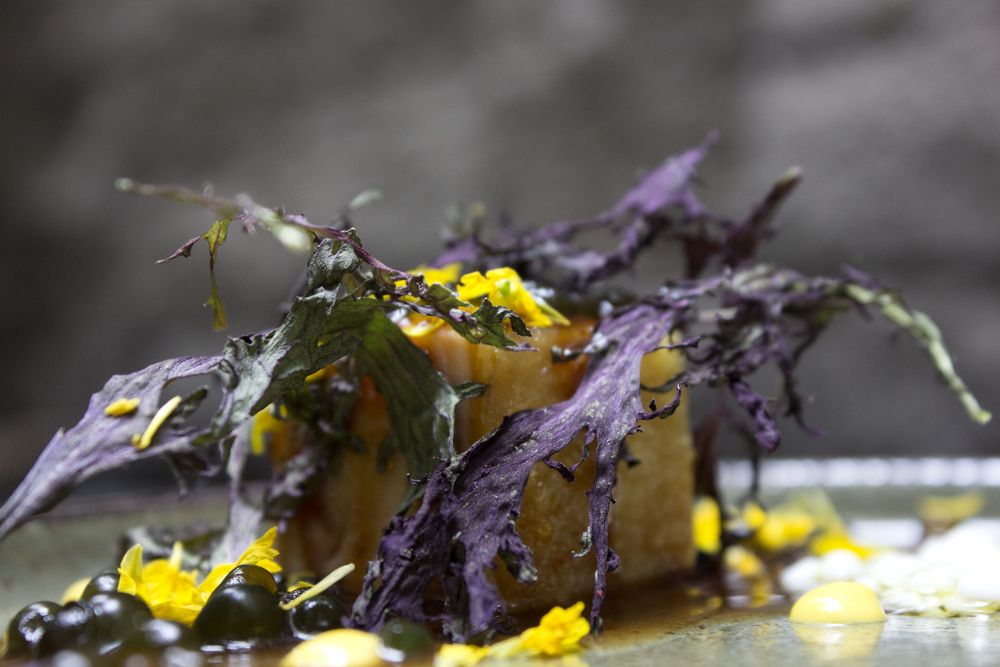
What makes Latin American cooking stand out and how do you tailor it for a British audience?
I think all Latin American food has an identity of its own; every country has something special to offer. Peruvian chefs talk a lot about our ingredients and I guess London is a great example of how it is possible to achieve Peruvian flavours outside the borders of this country.
Using our main ingredients, and some other local fresh products, Peruvian food can be made beautifully.
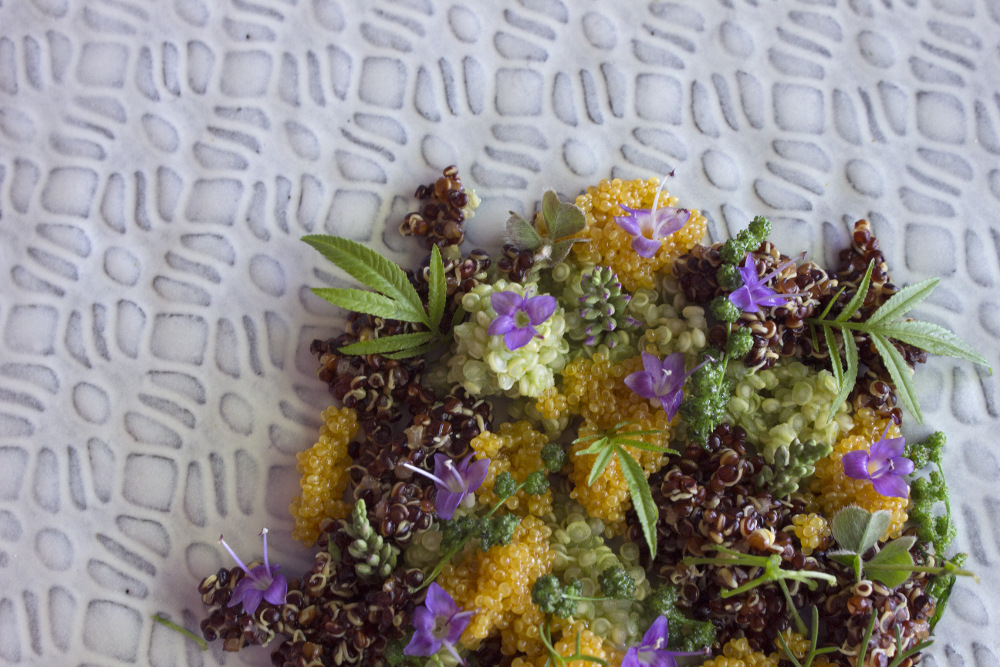
Why did you set up Mater Iniciativa?
Mater was created to register Peruvian ingredients in their origin, and to showcase our diversity, which responds to all things I mentioned before. There is a human intervention that has been fundamental and so Mater tries to gather stories, and offer inspiration and information.
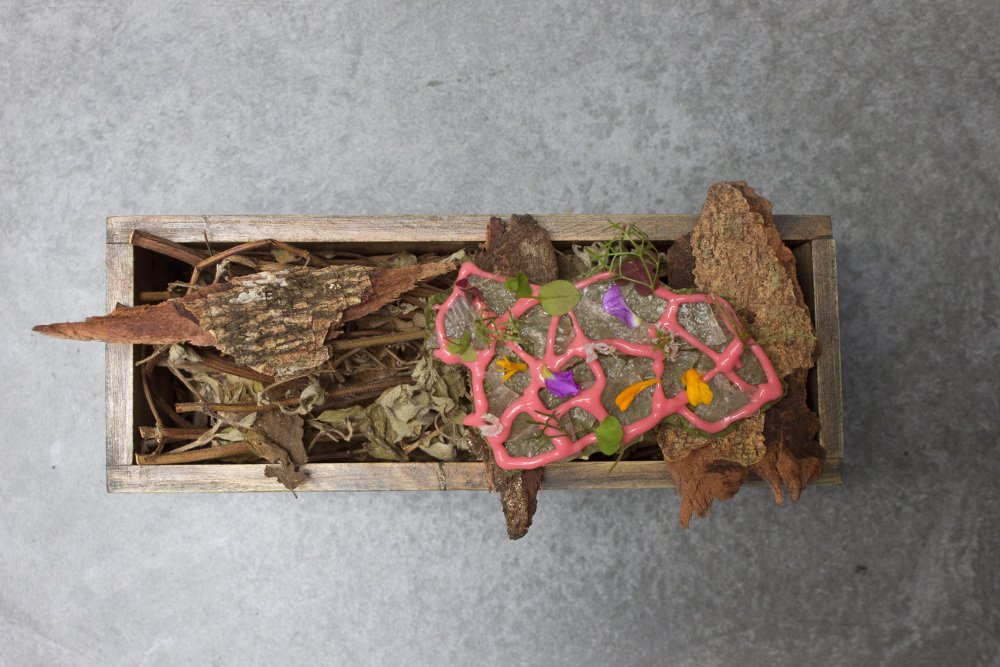
Peru has an abundance of fascinating ingredients. Can you tell me a little about cushuros, tuntas and some of your other favourite indigenous Peruvian ingredients?
Cushuros are cyanobacteria that collects in altitude lakes and ponds, and have been consumed for a long time in communities of our Sierra. These blue and green pearl-like spheres have been part of dishes that incorporate ingredients form highest altitudes, like potatoes, wild aromatics, roots like mullaca, etc.
Tuntas, on the other hand, are one great example of a preservation method taken from an old Andean tradition. Freeze-dried by intercalating cold river water immersion with sunlight exposure, these potatoes may be kept for years to be used rehydrated in soups or other hot preparations.
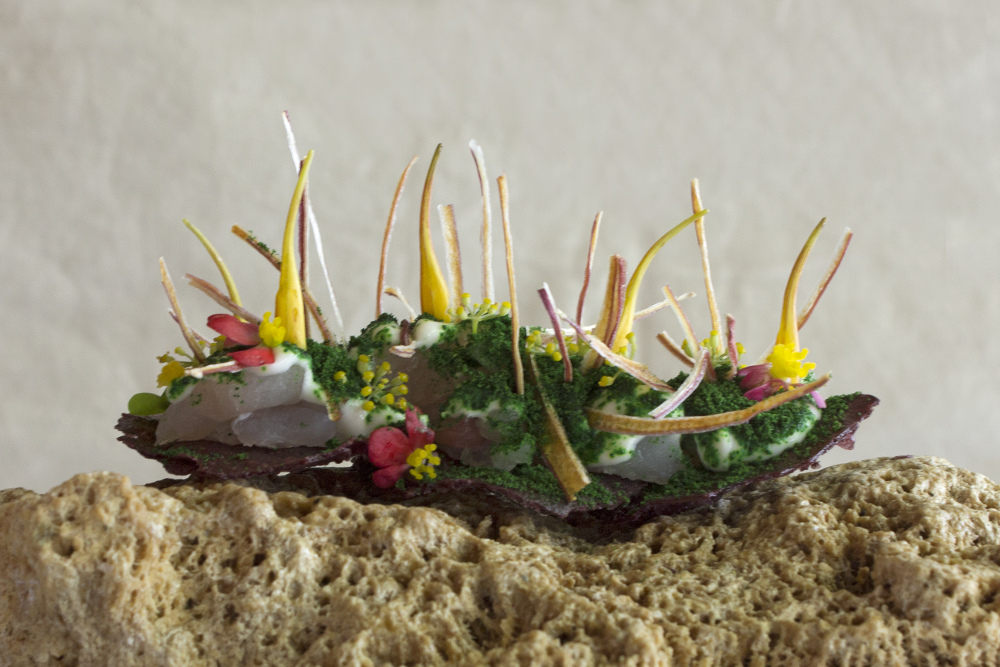
In early August 2016, you will be hosting a banquet at Wilderness festival in Oxfordshire, which brings together food and music in a very unique way. What part does music play in your life both inside and outside of the kitchen?
I think it is great how artists get inspired and create in every possible way. I am guessing music, as cooking, integrates elements to create a finished result. I am very much looking forward to be part of this event.
What will your next venture look like?
We have been working extensively in Mater to build a structured team that continues to search and inform. And we want to list more producers as suppliers, not only for one restaurant, but to help expand their markets.
We have a cookbook about Central coming up that will show our work and details of some trips this year. And we have more projects in parallel, but it may be too soon to report on those…
Virgilio Martínez Véliz will be preparing the Long Table Banquet at this year’s Wilderness Festival
Interview Cécile Fischer
We sit down with Jason Atherton protégé, Alex Craciun, to discuss why he has chosen to focus on Japanese cuisine at his new London venture, Sosharu
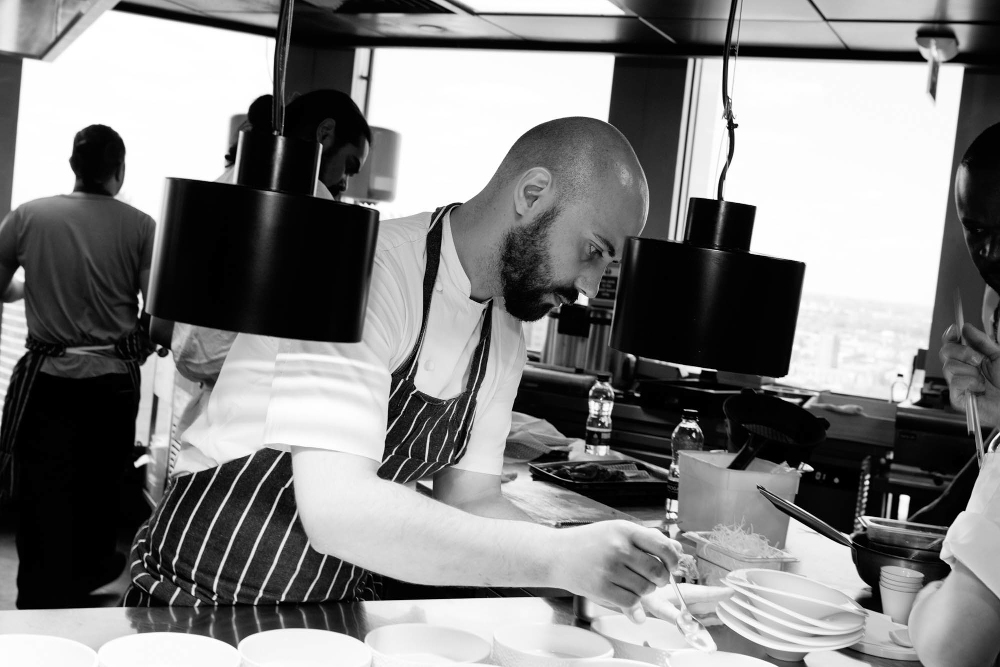
Romanian chef Alex Craciun began his career in a somewhat diverse fashion, trying hairdressing and engineering before ending up in the kitchen. He decided to pursue haute cuisine in full force, becoming an inimitable chef on the London restaurant scene and in spring 2016, he helped open his first restaurant as head chef. Sosharu — a contemporary Japanese eatery located in Farringdon, has been well received by the city’s food critics and had paved the way for the soon-to-be opened Kisetsu, a 10-seater offering a unique ‘chef to table’ experience, where the chef prepares the meal in the same room as his guests.
Having worked as a chef in Romania, the UK, Brazil, and Asia, Craciun has stored away a vast variety of techniques and tricks. Before opening Sosharu, he spent a year in Japan (under strict instructions from Jason Atherton) working in a different restaurant every season. This influence can be seen across the restaurant, from design choices to service style and, of course, the menu. This also extends to the atmosphere the head chef hopes to create in both restaurants. Craciun explains he wants his guests to fully experience the food, and to avoid the lure of everyday distractions; in Kisetsu, a curtain enclosing the room includes pockets for mobile phones, although the plates may be Instagram-worthy.
Here, we meet Craciun to discuss his trips to some of the top international kitchens, working under Gordon Ramsay, and how his love for Japanese cooking started with a Tonkatsu meal in central London.
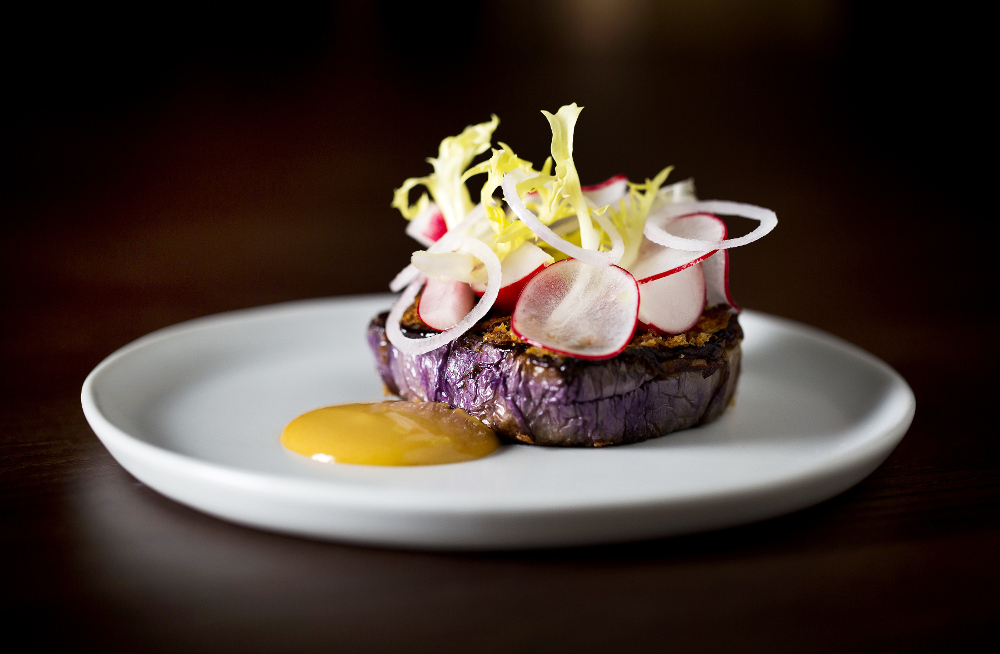
How did you get started in cooking?
For me, it was never, ‘my mum cooks, my father’s a chef’ – it was nothing like that. I studied electronic engineering and then I started to work in a massive factory. I didn’t like it, so I did a hairdressing course. I didn’t like that either, so I did a masseuse course. And then I didn’t like that…
I did a cooking course when I was about 19 or 20, still searching. At first, I didn’t like cooking either, to be honest. But I was lucky to work for someone who was very passionate: he was a young Romanian chef. I stuck with him for a couple of months and everything started from there.
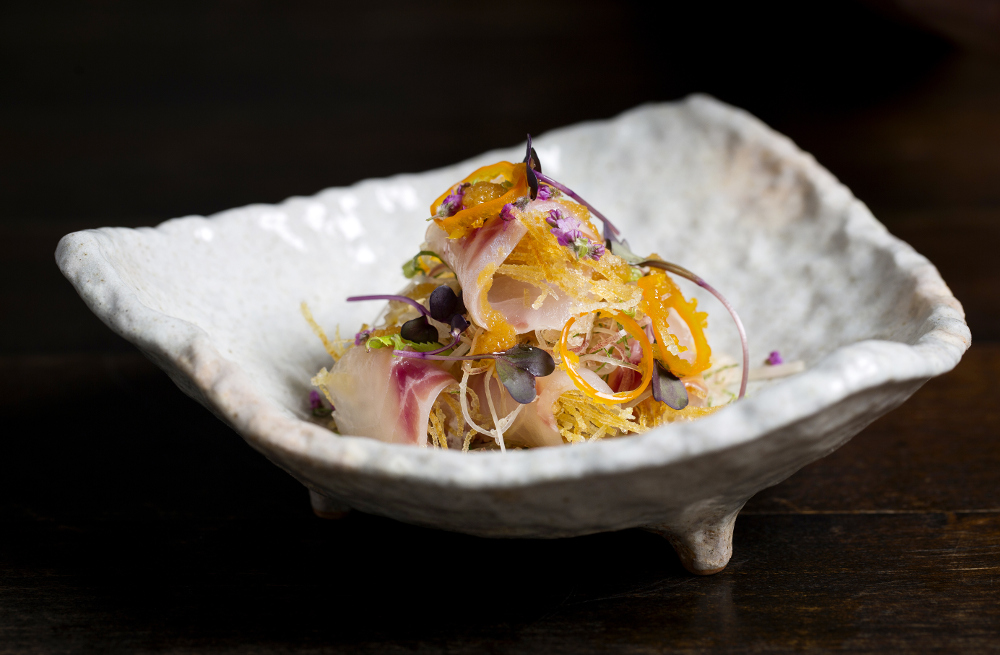
What kind of food were you cooking with him?
It was very traditional Romanian cuisine – very different from what I do now – all slow roasting and slow cooking. Back home, the majority of cooking is very slow: pigs, stocks, etc.
What happened next?
I left after a year and came to the UK. I started in Newcastle in a small pub, which was quite painful; I didn’t understand the accents, I didn’t speak the language. I wanted to go back home straight away, but I didn’t have the money to do it. So I said to myself that I needed to stay, in order to make enough money to go home. After 10 years, I’m still here!
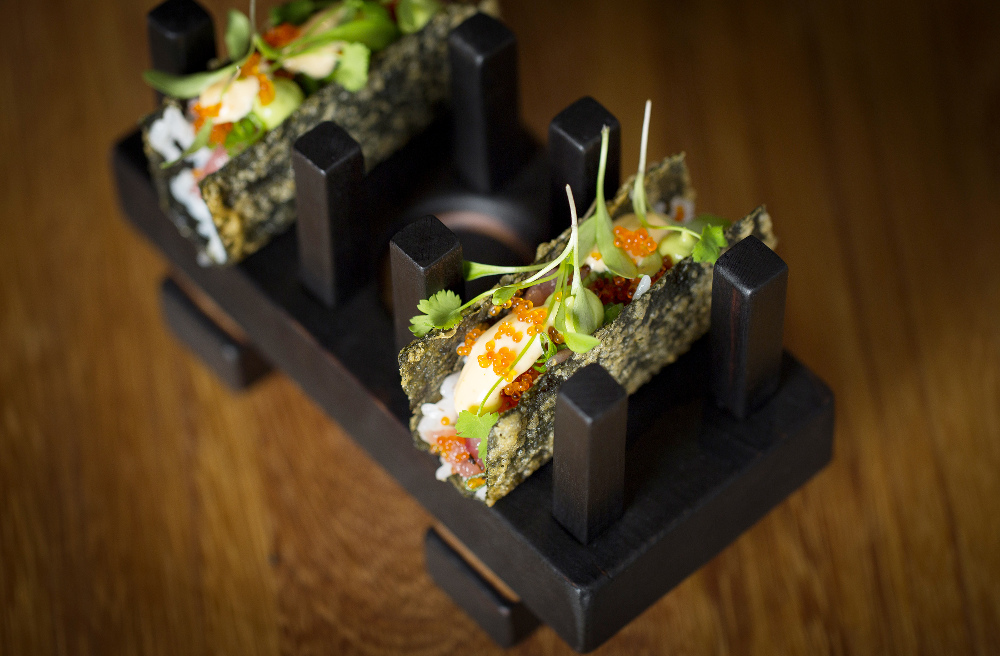
How did you end up in London?
I worked for Gordon Ramsay first. It was very different from where I worked before, there was much more pressure. Everyone was concentrating on the food, what they can do, what they can bring that’s new, etc. It was a push for me to get better.
On my days off, I started to work at the Maze with Jason Atherton, which is how we got to know each other. I worked there one or two days a week for six or seven months. And then I asked for a job, and they said: ‘Yes, no problem, you know the menu!’ So it was easy. I stayed at the Maze for three years, then went to Brazil for a month, and back to Eastern Europe. Two years ago, I went to work in Japan.
Can you tell us about your time in Japan?
I was there for a year, so I did every season, eadh in a different restaurant. The majority of techniques that we do here at Sosharu, we take from Japan. We concentrate on vegetables. There’s no butter or cream anywhere in the restaurant. Everything is very healthy.
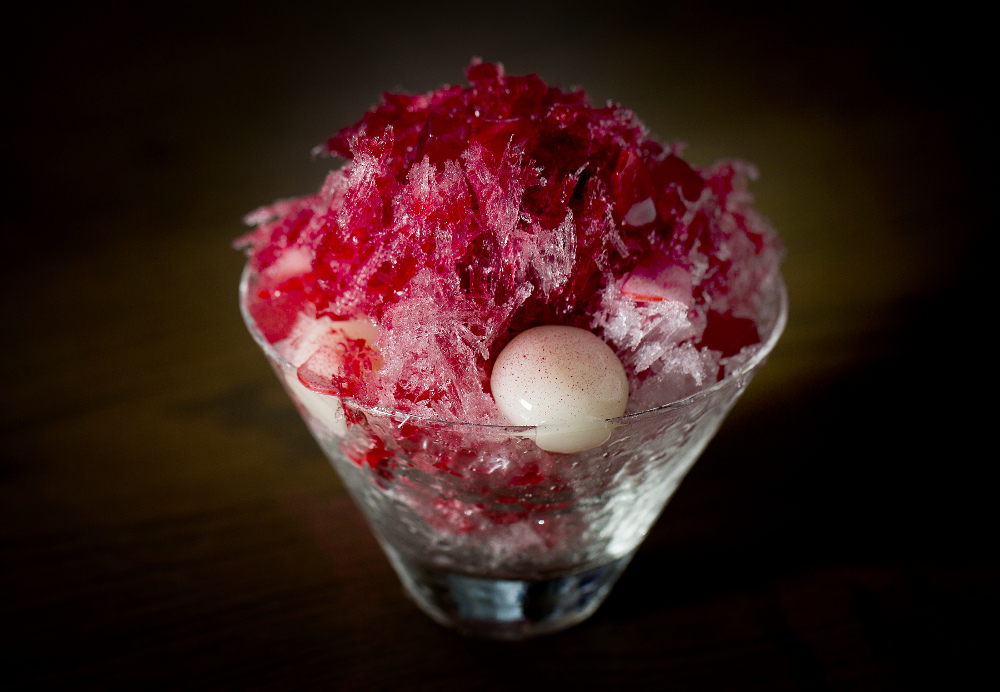
What brought you to Japanese cooking?
I only tried Japanese food for the first time five years ago – it was nothing special, but I still remember it. I wanted to identify the taste, and know how they had done it. It was a Ton Katsu, rice, with a Japanese curry. That was the start.
It’s a massive change from Romanian food, and the UK – a completely different culture. Every recipe is different. I love Japanese cuisine for the taste and the flavours. I love something new, challenging. It was the right moment, at the right time.
What did you learn in Japan?
It opened my eyes, being in Japan, working with local chefs. It’s a different philosophy: they are very clean and they’re not crazy on doing totally ‘different’ flavours.
At Sosharu, we try to use more British produce, and then blend the flavours to make it Japanese.
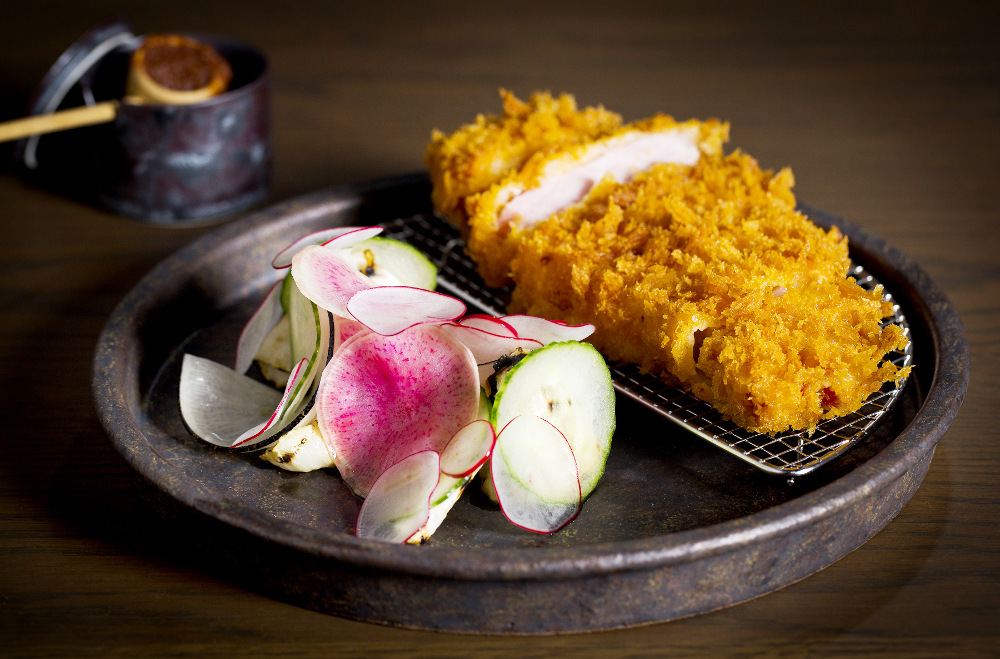
How has your new restaurant been since opening?
It’s been very busy, which is good. We have a lot of work to do, but everyone is positive and supportive. Being a chef, you have your own idea of what is amazing, but you need to listen to your guests. That’s the most important thing – they come in, and we need to make them happy. Not just us in the kitchen.
Alex Craciun’s new restaurant Sosharu is now open. A 10-seater restaurant, Kisetsu, will open soon.